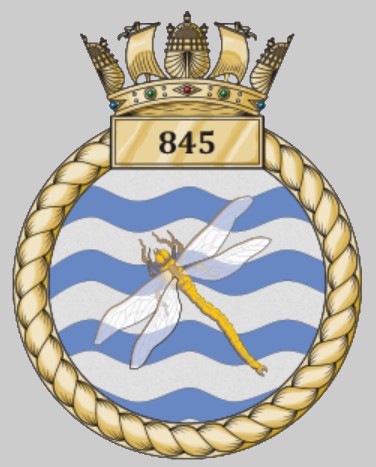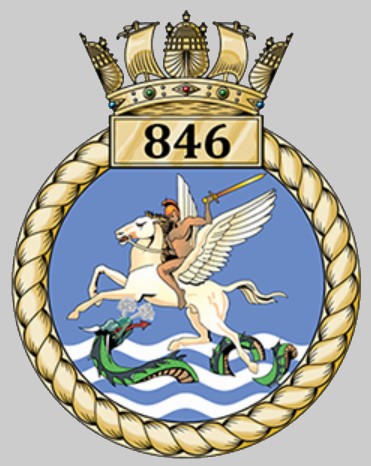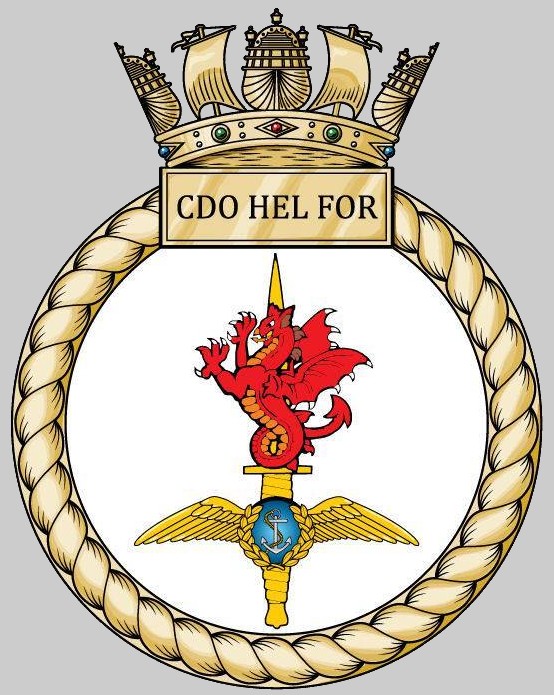 |
||
|
HOME
|
US Navy -
ships
|
US Navy - air
units
|
USMC - air
units
|
International
Navies
|
Weapon Systems
|
Special Reports |
||
|
|
||
|
|
||
|
Royal Navy / Fleet Air Arm Merlin HC4 Commando Helicopter (AgustaWestland / now Leonardo AW101) |
||
|
|
||
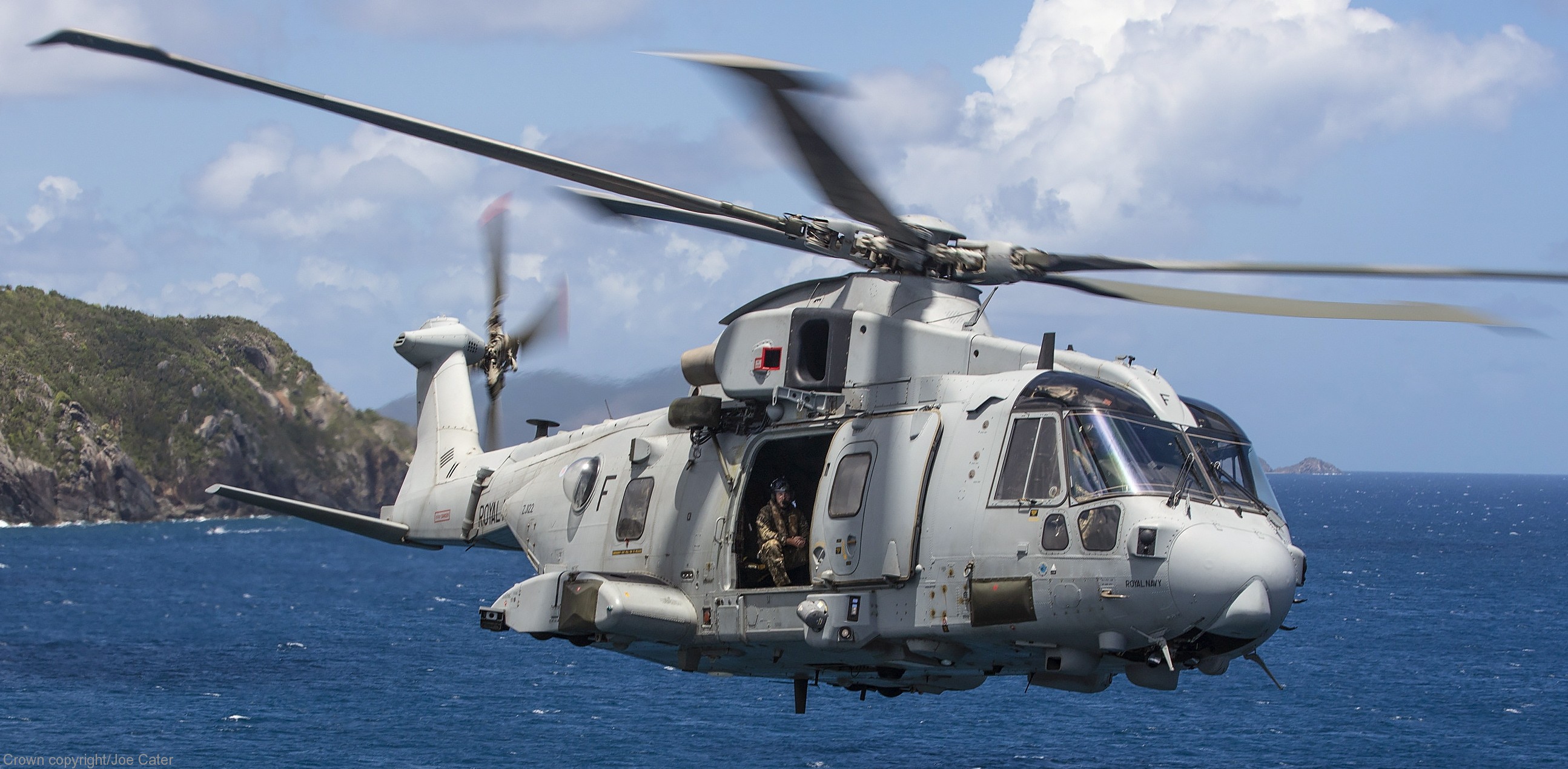 |
||
|
|
||
| Units: | ||
|
||
|
The British Royal Navy's final order was
for 44 ASW aircraft, originally designated Merlin HAS.1 but soon
changed to Merlin HM1. The first fully operational Merlin was
delivered on 17 May 1997, entering service on 2 June 2000. All
aircraft were delivered by the end of 2002, and are operated by 3
Fleet Air Arm squadrons: 814 NAS, 820 NAS, 824 NAS and 829 NAS (now
disbanded and merged with 814 NAS), all based at RNAS Culdrose in
Cornwall. 700 NAS was the Merlin Operational Evaluation Unit from
2000 to 2008. In March 2004, Navy Merlins were temporarily grounded
following an incident at RNAS Culdrose in which a tail rotor failed
due to a manufacturing defect. An improved tail rotor was designed
and adopted on most AW101s; according to AgustaWestland, the
redesigned rotor also significantly reduced associated maintenance. In 1995, it was announced that the Navy's Westland Lynx helicopters would be retired in favour of an all-Merlin fleet. However, the subsequent Strategic Defence and Security Review 2010 stated that the future naval helicopters would be the Merlin and the Wildcat, a derivative of the Lynx. Royal Navy Merlins have seen action in the Caribbean, on counter-narcotics and hurricane support duties, as well as maritime security duties in the Persian Gulf. Merlins have also seen active duty in Iraq, providing support to British and coalition forces based in the region. The Merlin HM1 has been cleared to operate from the Royal Navy's aircraft carriers, amphibious assault ships, Type 23 frigates and several Royal Fleet Auxiliary (RFA) vessels including the Fort Victoria class; it is also to equip the Type 45 destroyer. 30 aircraft have been upgraded to Merlin HM2 standard under the £750m Merlin Capability Sustainment Programme; Lockheed Martin UK delivered the final HM2 on 11 July 2016. The HM2 has a new mission system, digital cockpit, electro-optical camera and multi-static processing for the sonar system. The HM2 performed its first ship-borne test flight in September 2012 and achieved IOC on 30 June 2014, after nine HM2 had flown 480 hours from Illustrious during Exercise Deep Blue earlier that month. It was also reported that some of the eight airframes not scheduled to be upgraded for financial reasons may be updated. Five HM2s are in maintenance at any one time, leaving 25 available at readiness, of which 14 will be assigned to the Queen Elizabeth-class aircraft carrier. In addition to its anti-submarine role, the HM2 will be able to carry an airborne early warning (AEW) pod under procurement through the Crowsnest programme to replace the Sea King ASaC7. In September 2011, Thales UK proposed re-using Sea King ASaC7 equipment, such as the Searchwater 2000, on the Merlin; Lockheed Martin has proposed developing a new multi-functional sensor for either the AW101 or other aircraft. Lockheed originally planned to use a derivative of the F-35's APG-81 radar but is now believed to be using an Elta system; both it and the Thales system will begin flight trials in the summer of 2014 with Main Gate in 2016. Ten pods are planned with IOC in 2019. On 22 May 2015, The MOD and Lockheed Martin UK, as the prime contractor for Crowsnest, selected Thales as the chosen bidder to provide the radar and mission system at the heart of the Crowsnest capability. On 15 December 2009, plans were announced to transfer RAF Merlin HC3s and HC3As to the Royal Navy's Commando Helicopter Force to replace retiring Sea King HC4 helicopters. The Sea King was set to retire in 2016, leaving the Navy operating a combination of the Wildcat and Merlin. 846 NAS reformed with ex-RAF Merlin HC3s on 30 September 2014; 845 NAS followed on 9 July 2015. On 25 May 2018, the first of 25 converted Royal Marines Commando Merlin Mk4/4A were delivered to Royal Naval Air Station (RNAS) Yeovilton. In July 2020, the Merlin HM2 and HC4/4A helicopters were planned to be in service until 2029 and 2030, respectively. On 11 June 2021, it was confirmed that their Out of Service Date (OSD) had been moved to 2040. 845 and 846 NAS received Merlin HC3s/HC3As to replace the retiring Sea Kings in 2014 and 2015. 846 NAS took their Merlin HC3s on 30 September 2014; 845 NAS followed on 9 July 2015. These are being upgraded to the Merlin HC4/4A as part of the Merlin Life Sustainment Programme (MLSP). The Merlin HC4 has a grey colour scheme, not the dark green colour of the "Junglie" Sea Kings. Variants: Merlin HM1: Royal Navy designation for the Model 111 Merlin HM2: Avionics retrofit of 30 HM1s for the Royal Navy Merlin HC3: Royal Air Force designation for the Model 411 Merlin HC3A: Royal Air Force designation for six former Royal Danish Air Force Model 512s modified to UK standards Merlin HC3i: Royal Navy will fit seven HC3 with folding rotor heads as an interim (3i) measure until the full HC4 upgrade is available Merlin HC4/4A: The conversion of 25 RAF HC3/3A for RN use in hand with the first flight taking place in November 2016. HM2 cockpit, folding tail/blades and other adaptations for naval use Specifications (Merlin HM1): Length: 19.53 m (64 ft 1 in) fuselage Height: 6.62 m (21 ft 9 in) Empty weight: 10,500 kg (23,149 lb) Max takeoff weight: 14,600 kg (32,187 lb) Powerplant: 3 x Rolls-Royce Turbomeca RTM322-01 turboshaft engines, 1,566 kW (2,100 hp) each (take-off power) Main rotor diameter: 18.59 m (61 ft 0 in) Main rotor area: 271.51 m2 (2,922.5 sq ft) Performance: Cruise speed: 278 km/h (173 mph, 150 kn) Never exceed speed: 309 km/h (192 mph, 167 kn) Range: 833 km (518 mi, 450 nmi) Endurance: 5 hours Service ceiling: 4,575 m (15,010 ft) Crew: 3-4 Capacity: 26 troops (38 passengers) or 5 tonnes of payload or 4 stretchers (with dipping sonar array removed) for Merlin HM1; 30 seated troops or 45 standing fully equipped combat troops, or 3,050 kg (6,724 lb) of internal payload, 5,520 kg (12,169 lb) of external payload Avionics: Smiths Industries OMI 20 SEP dual-redundant digital automatic flight control system Navigation systems: BAE Systems LINS 300 ring laser gyro Litton Italia LISA-4000 strapdown attitude and heading reference system Radar: Selex Galileo Blue Kestrel 5000 maritime surveillance radar ECM: Racal Orange Reaper ESM source: wikipedia
|
||
| images | ||
|
> LINK: former in-use variant Merlin HC3 / HC3A / HC3i  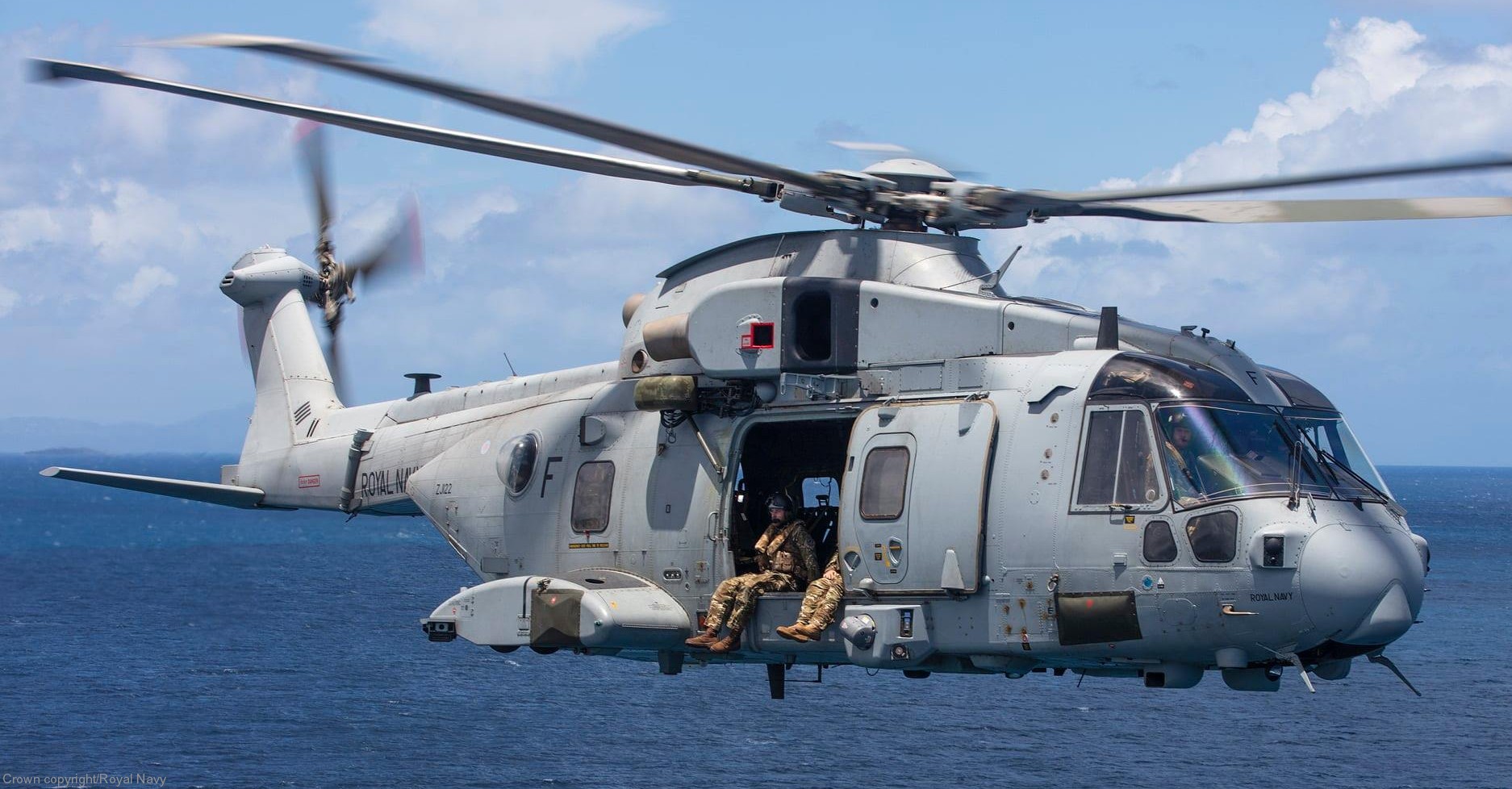 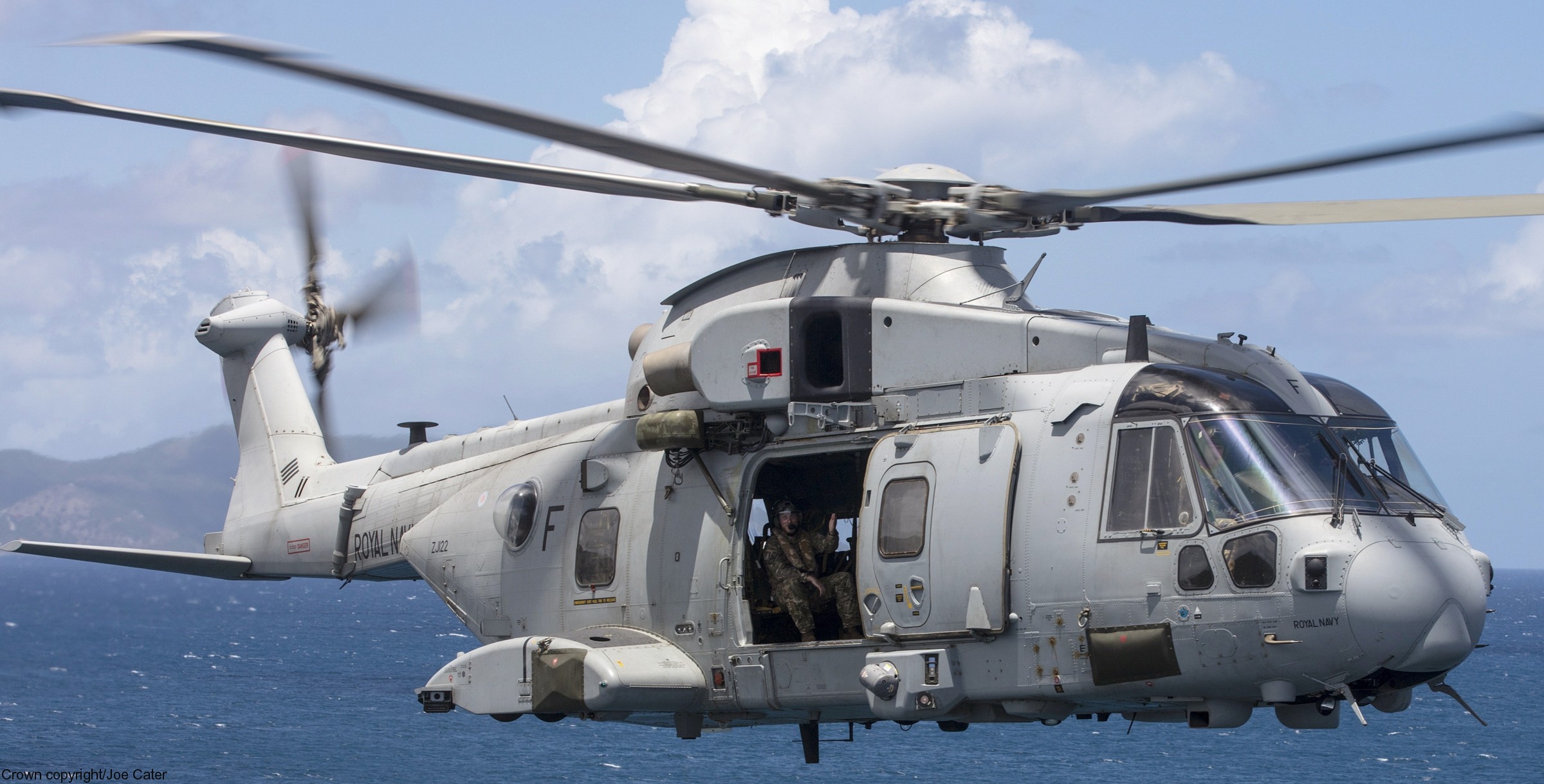 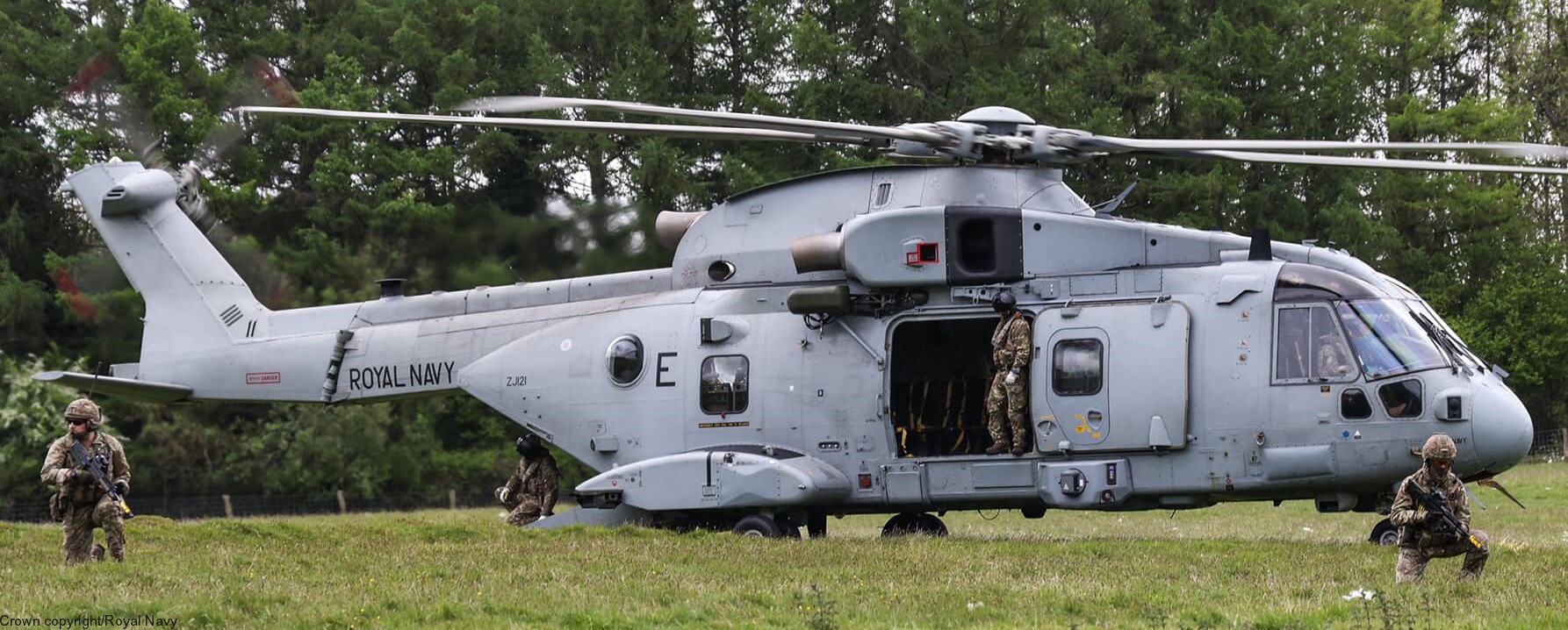 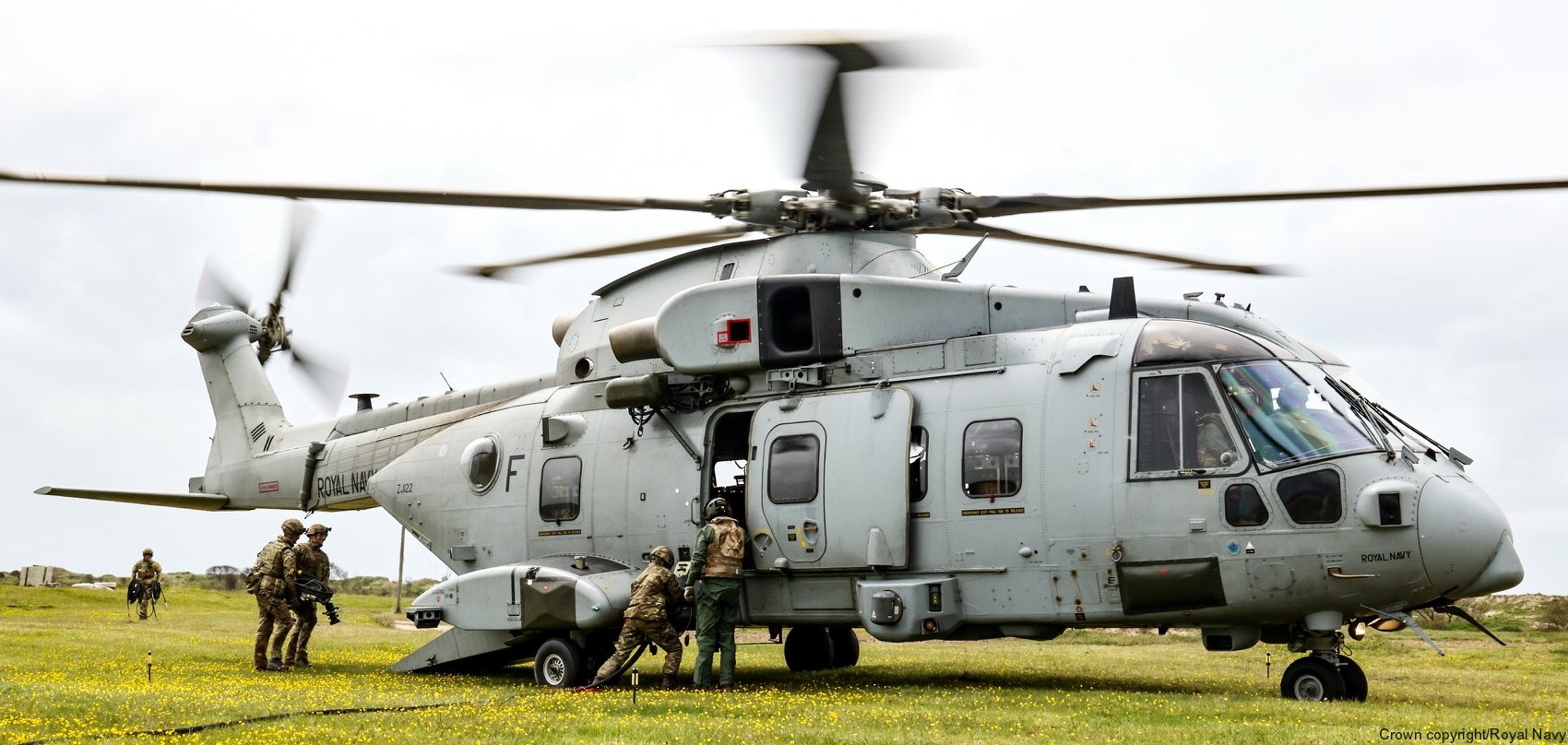 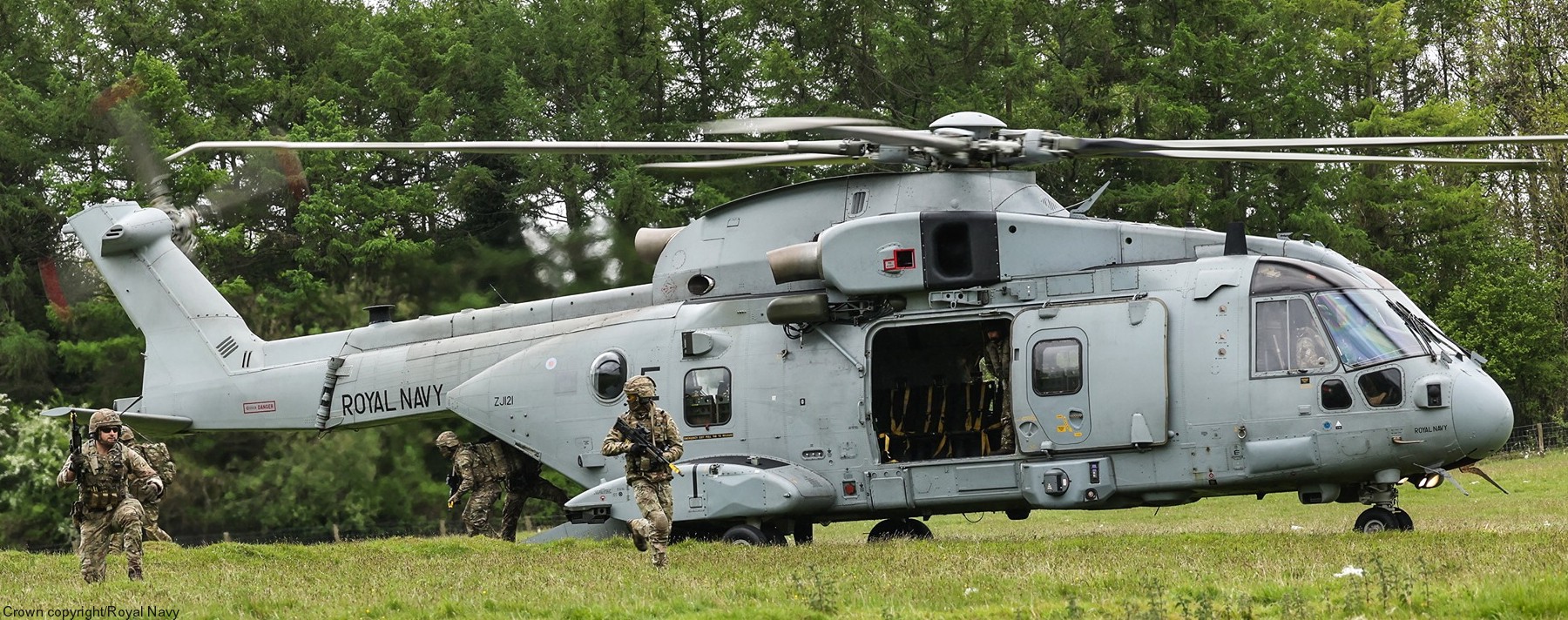 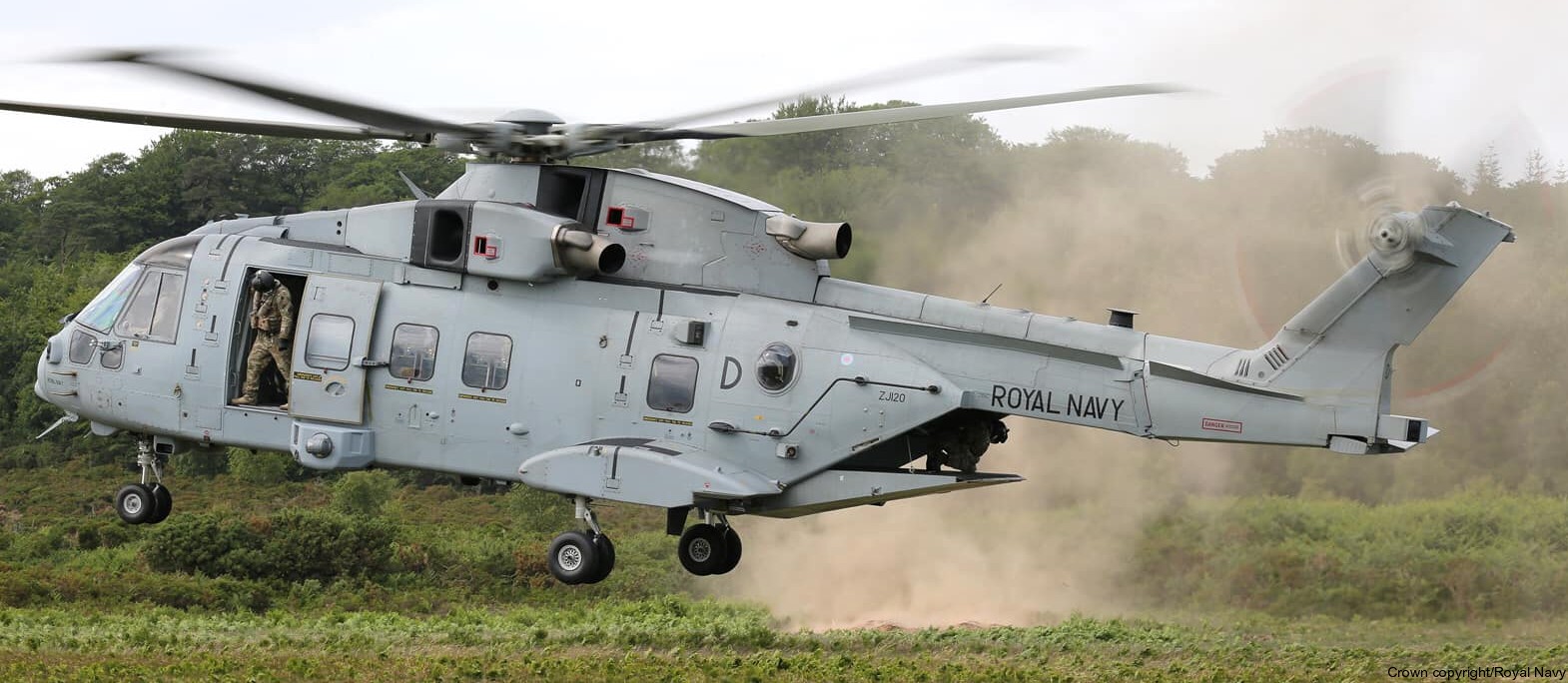 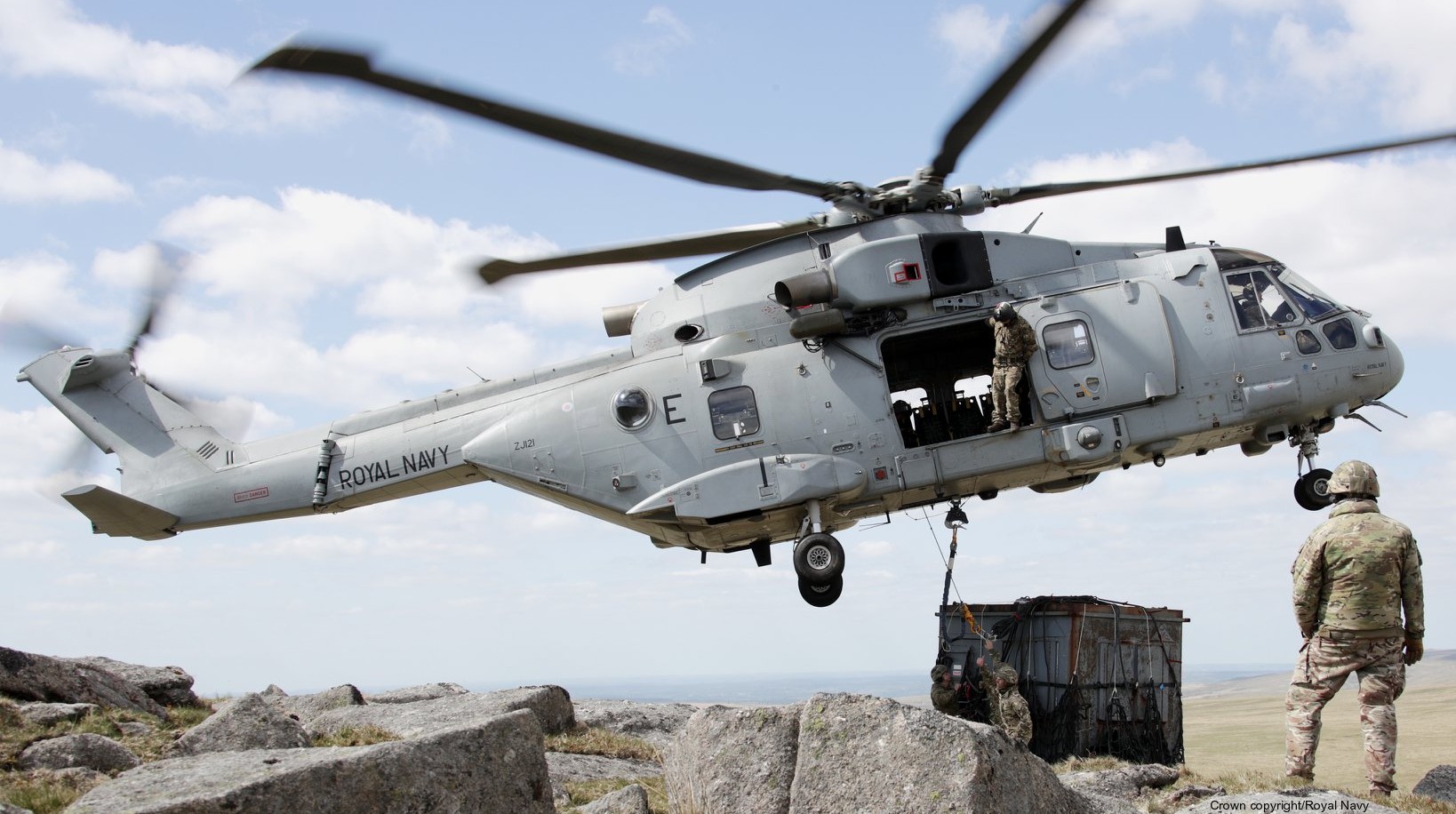 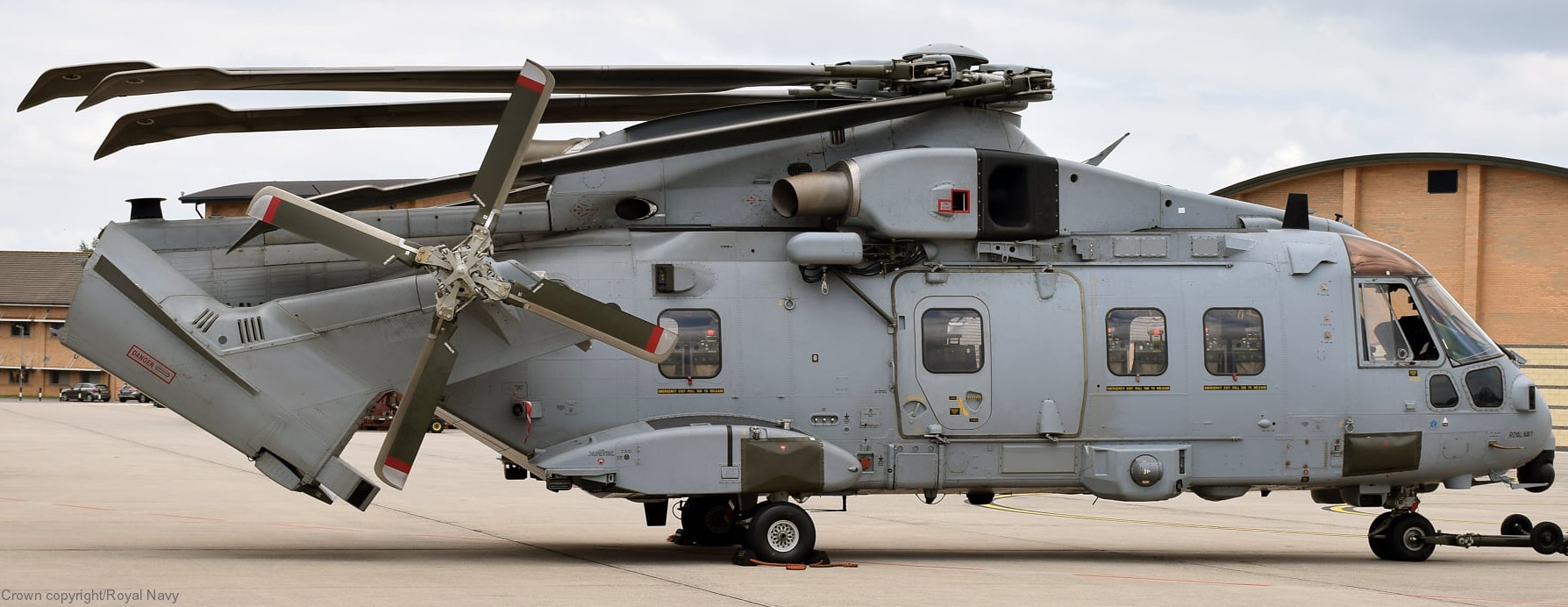 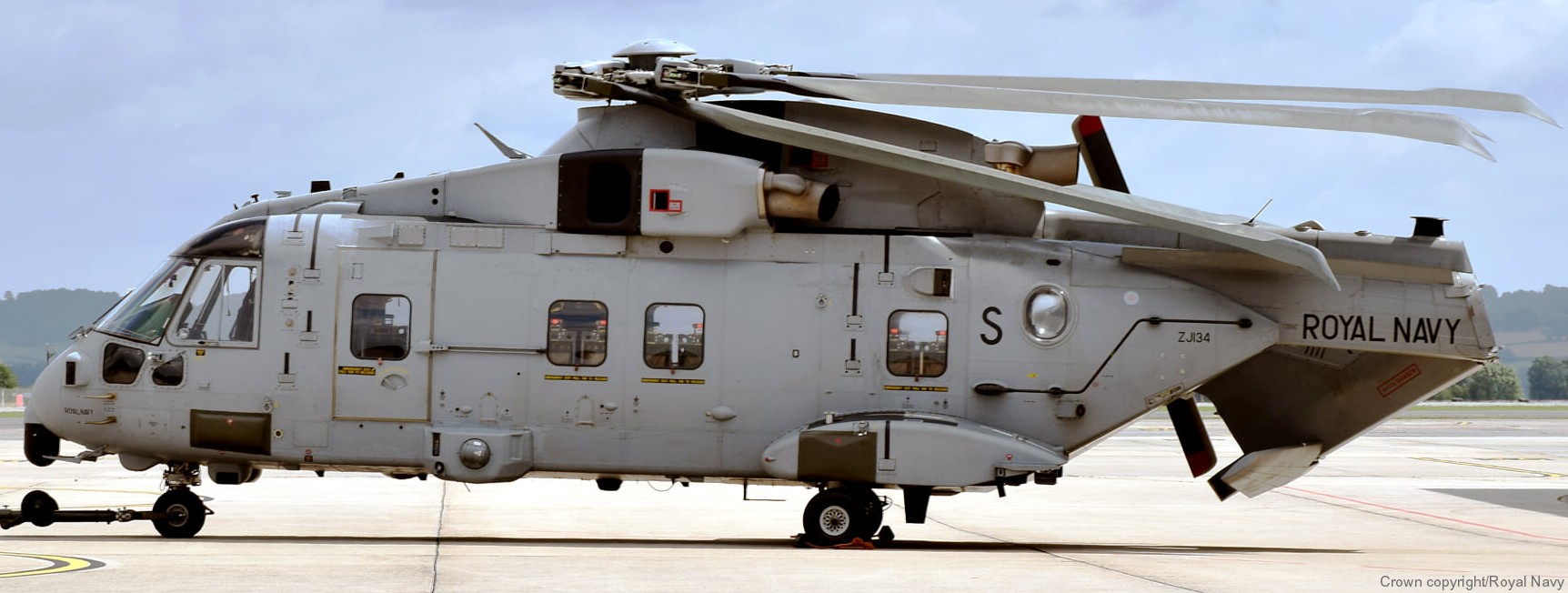 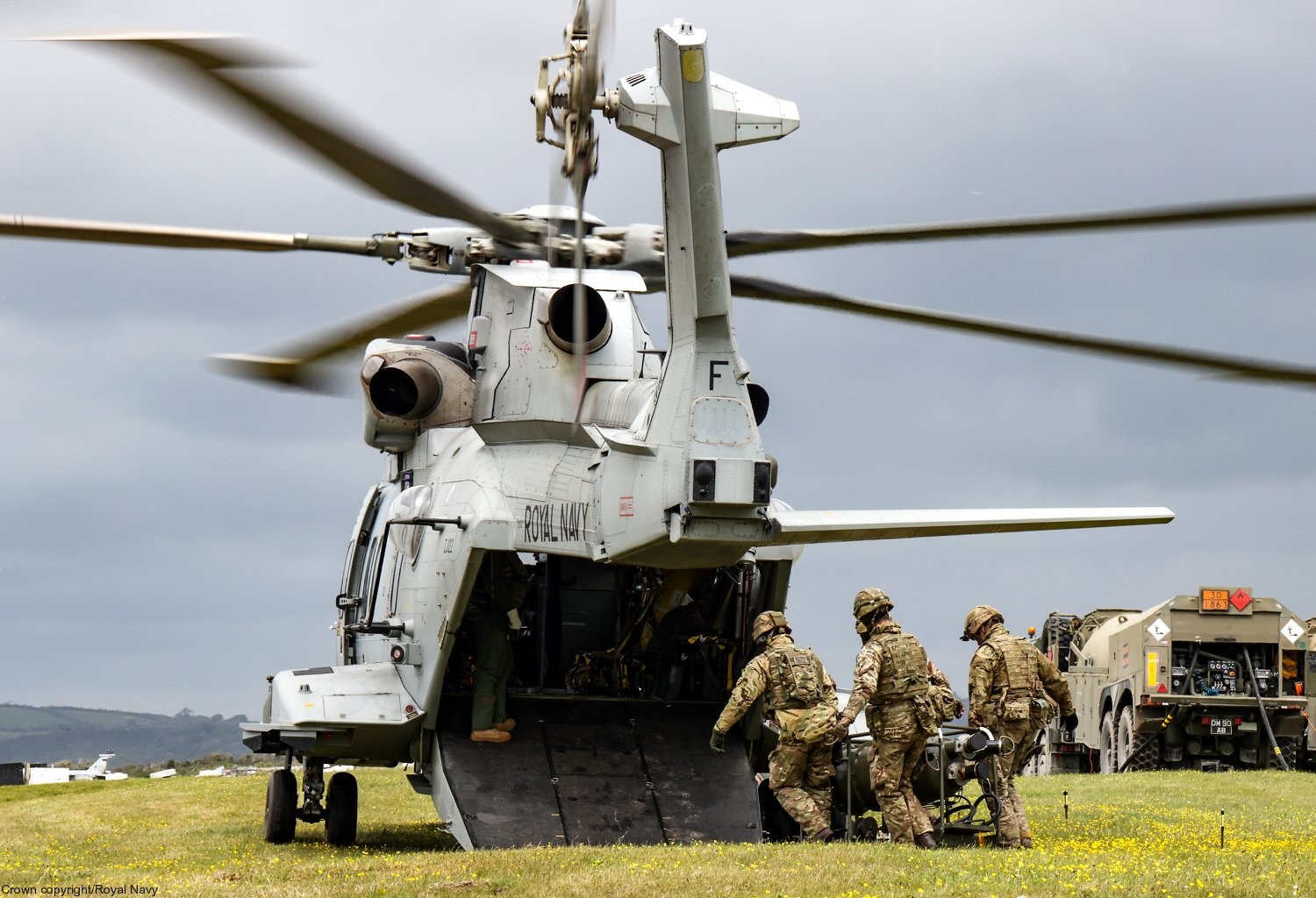 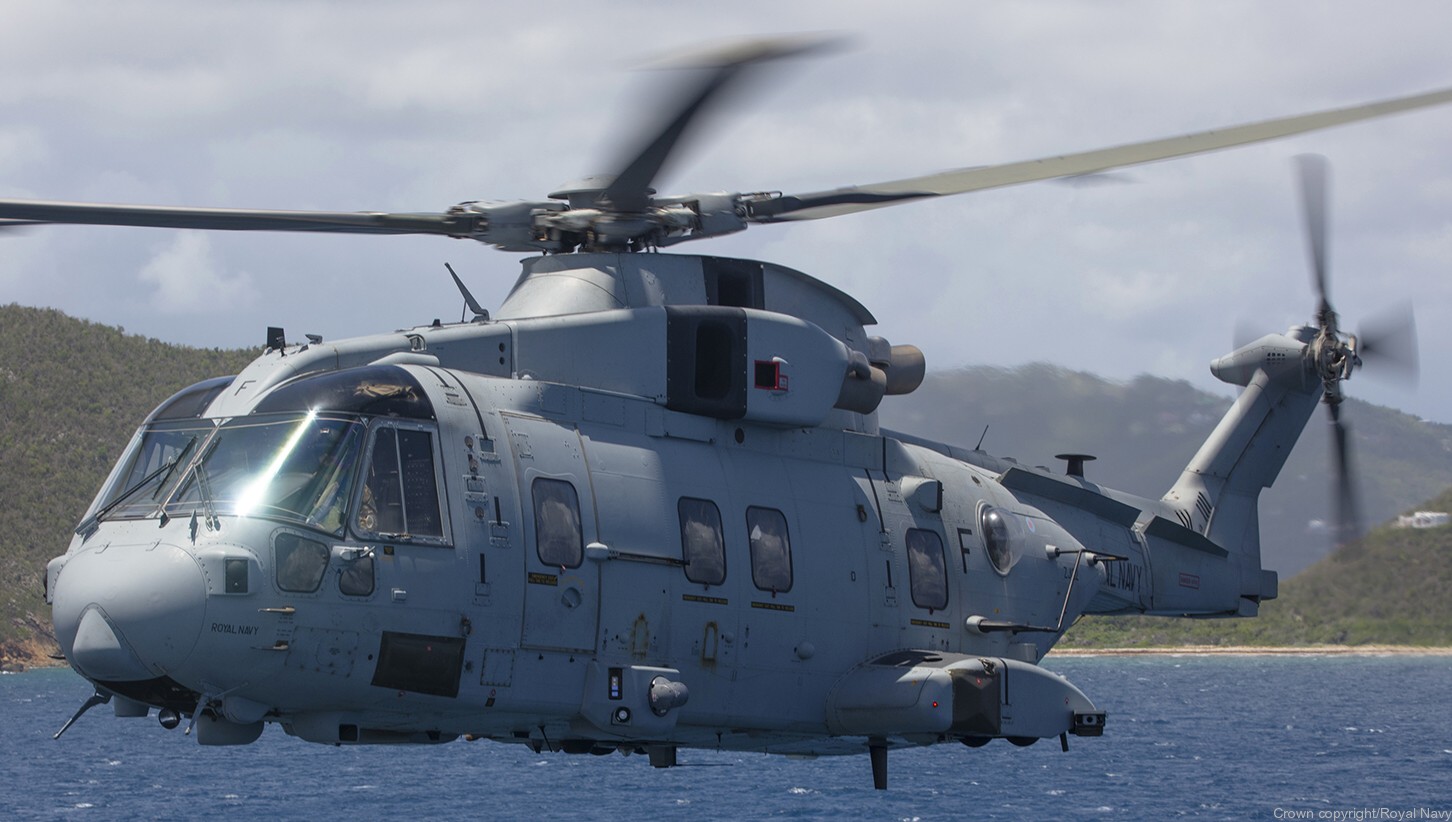 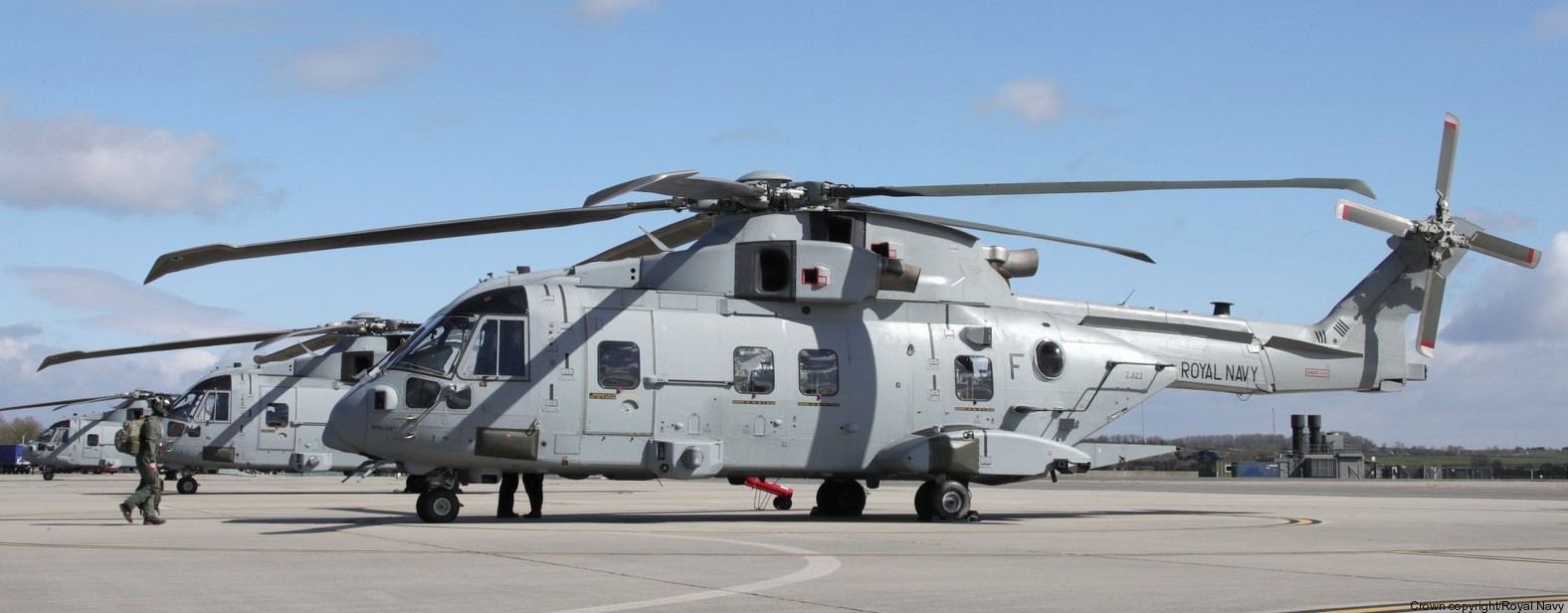 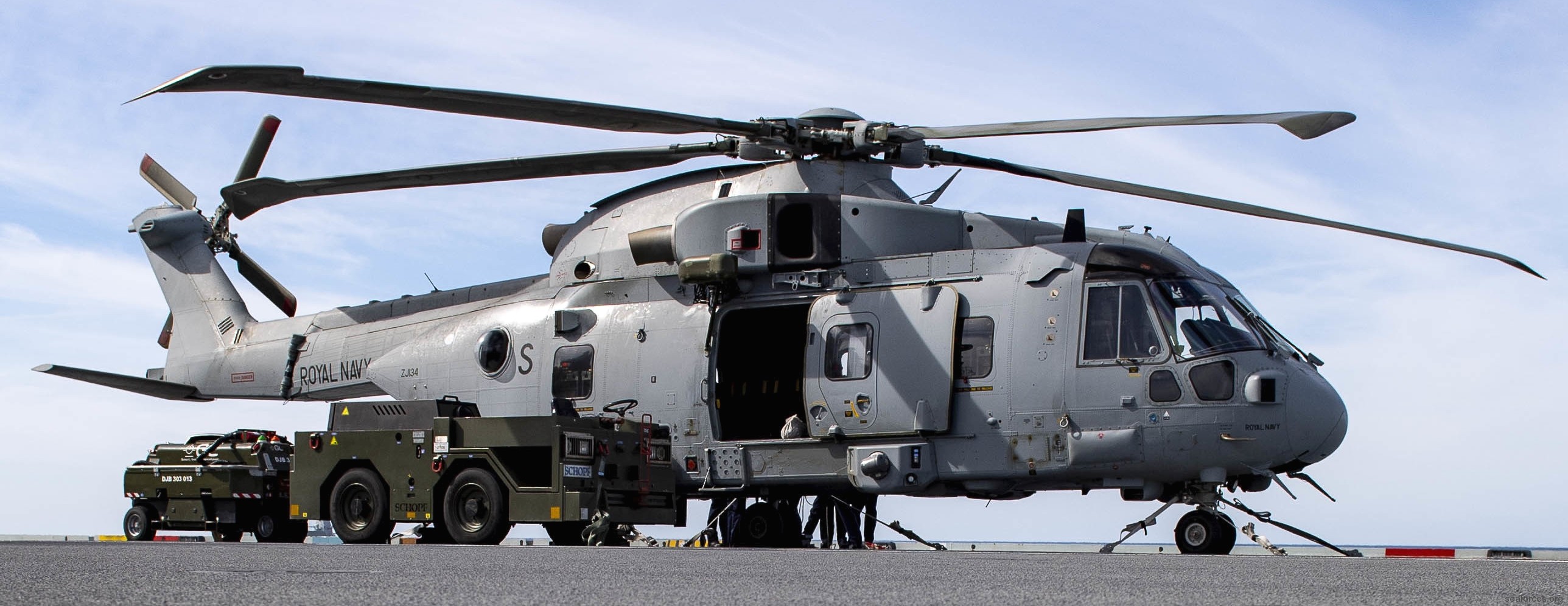 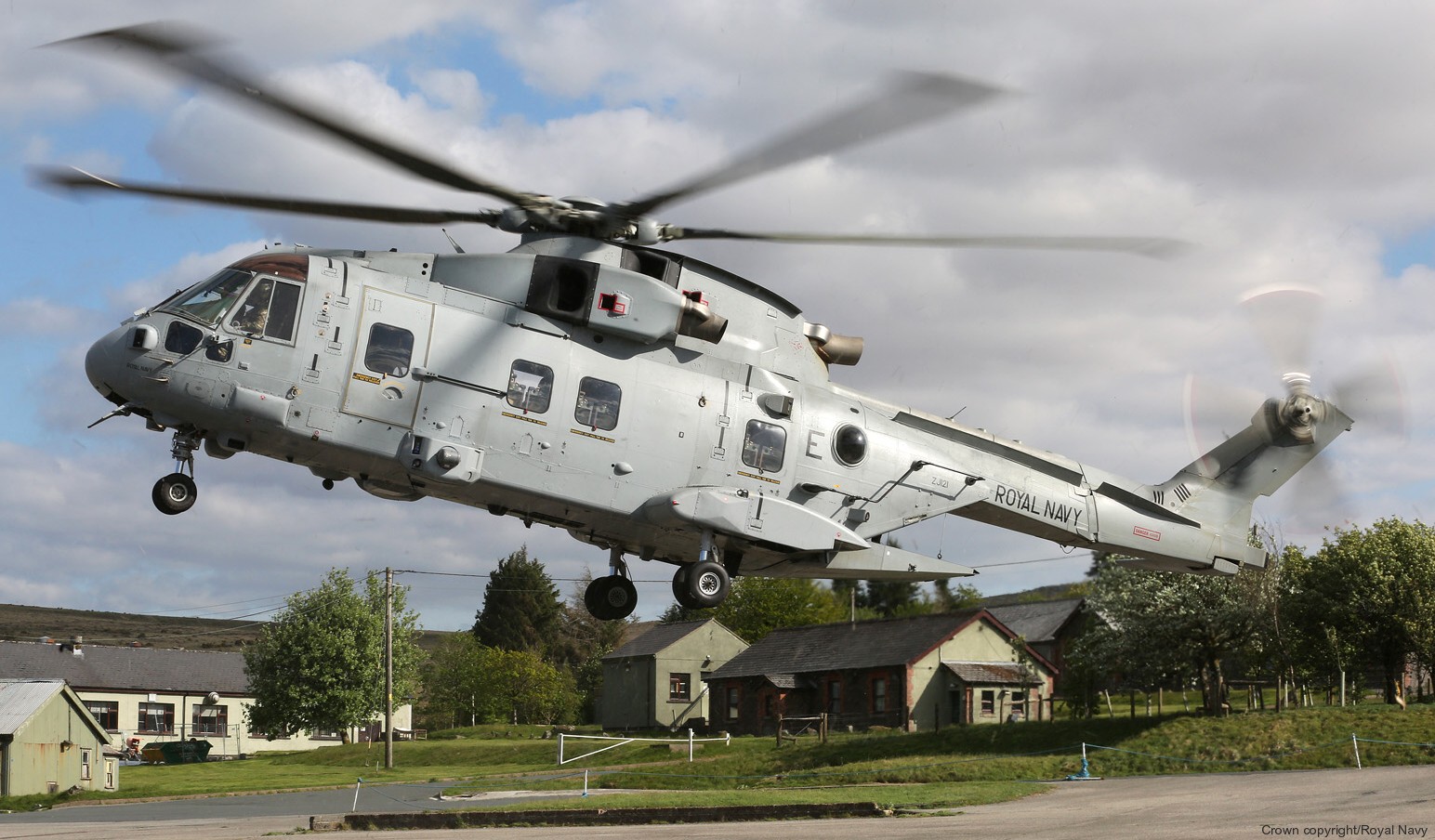 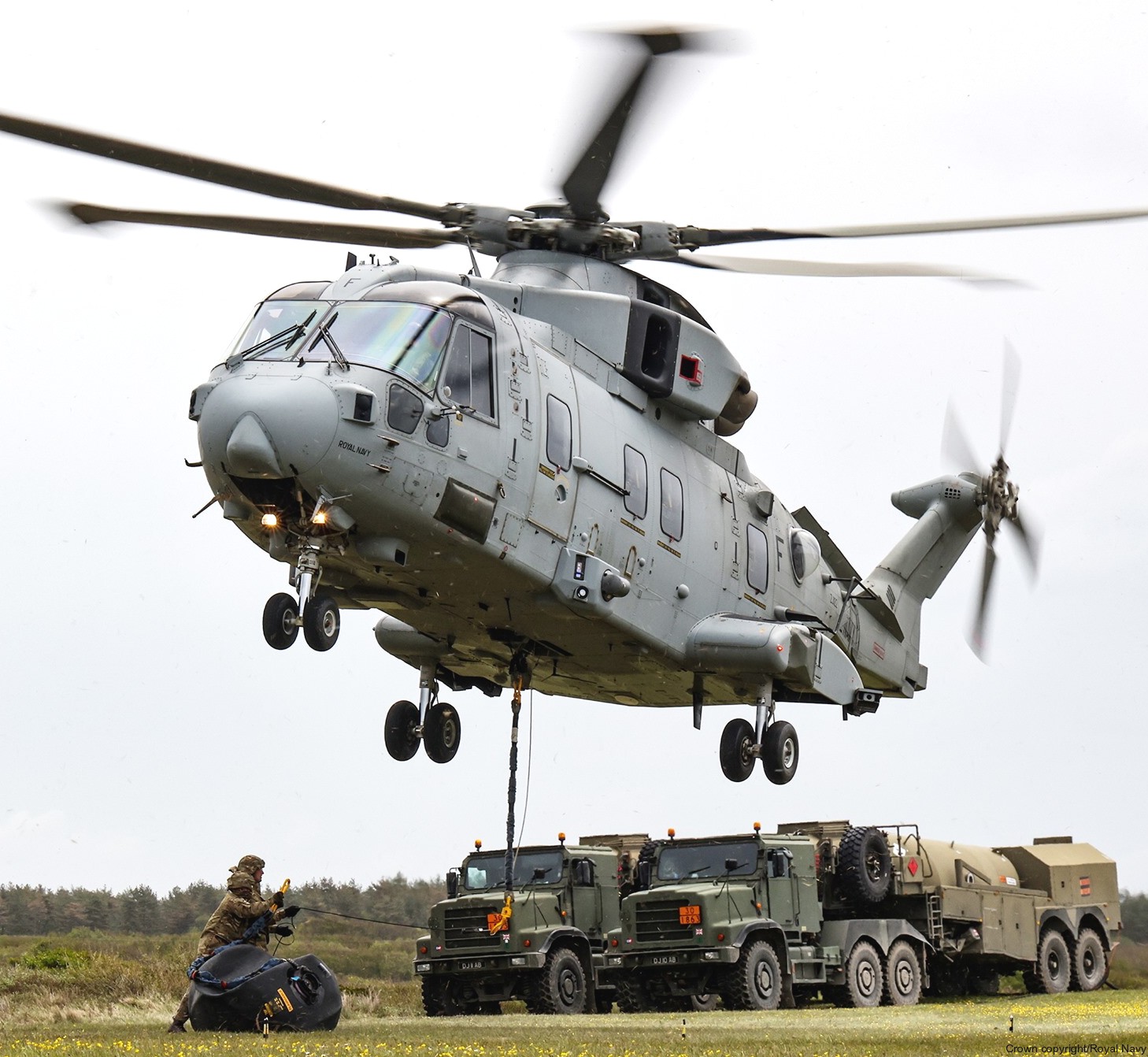  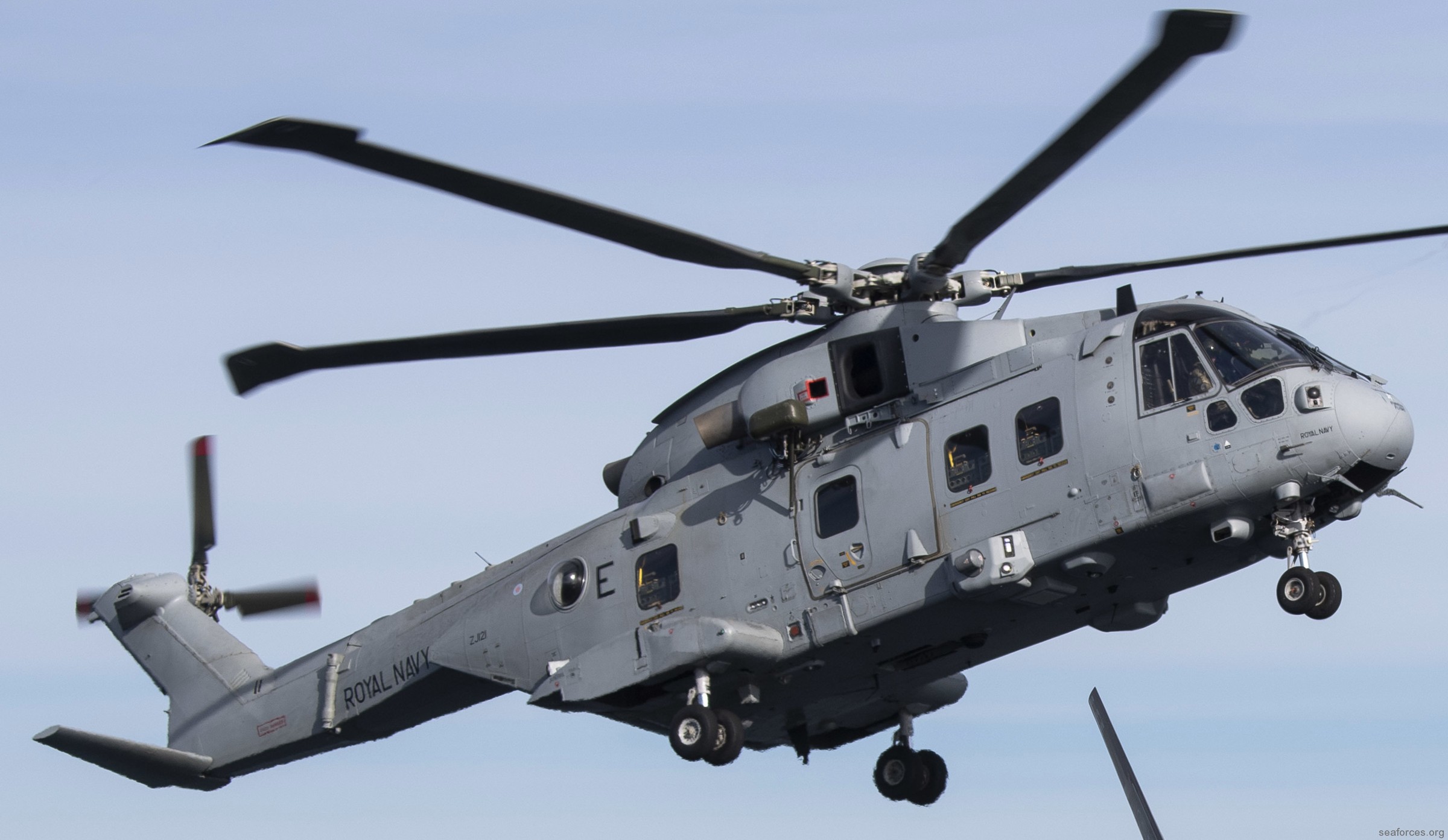 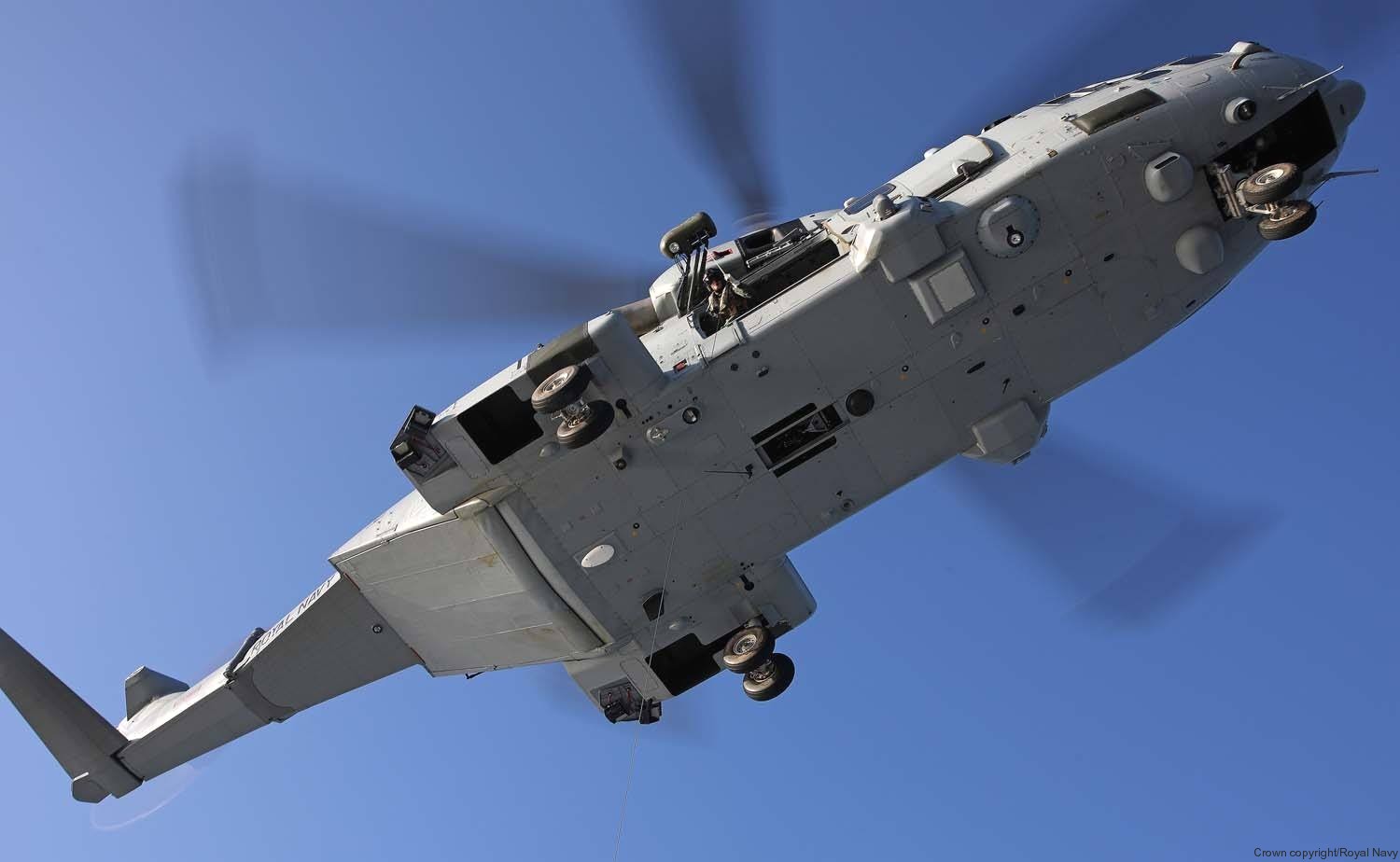 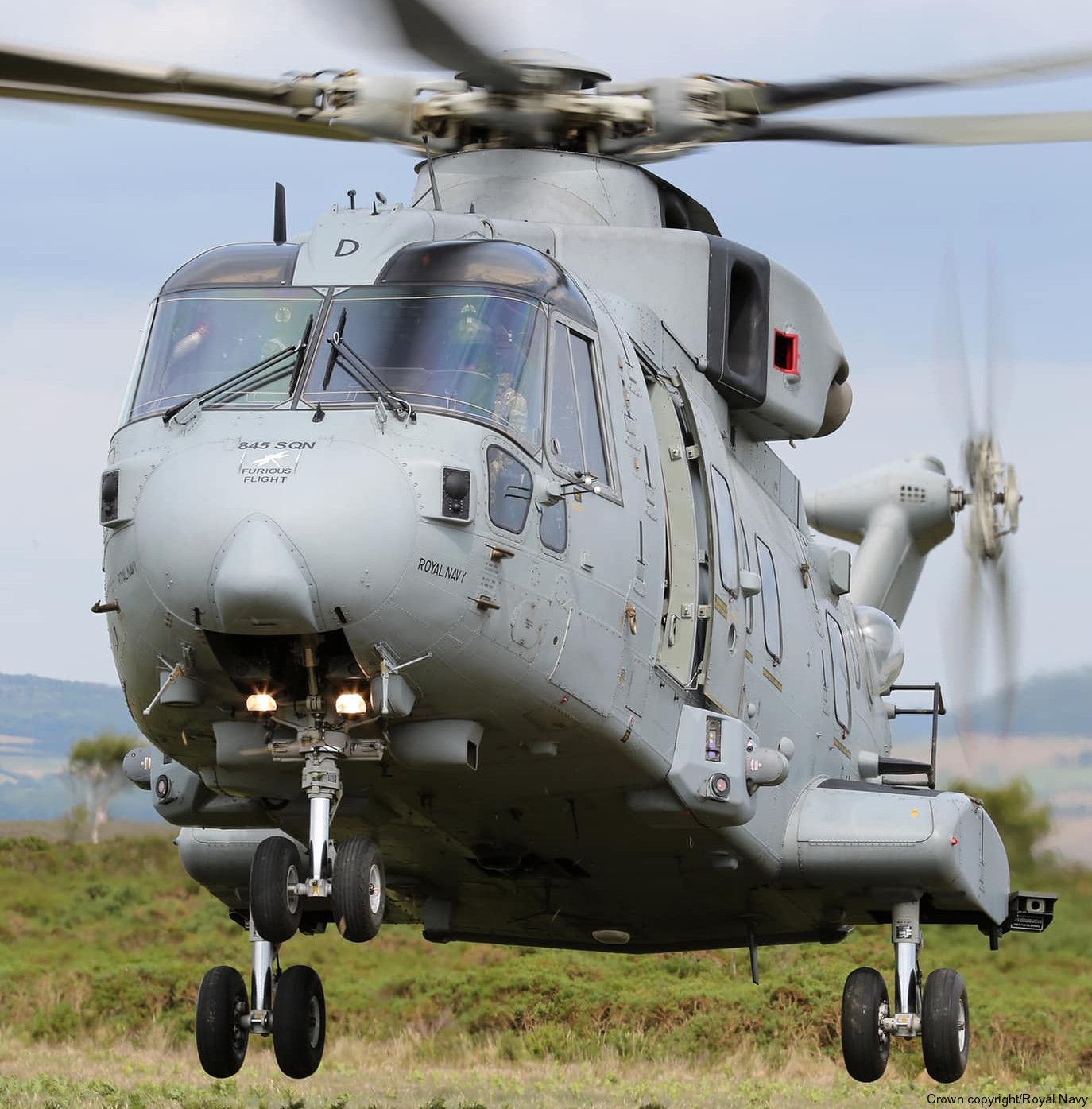 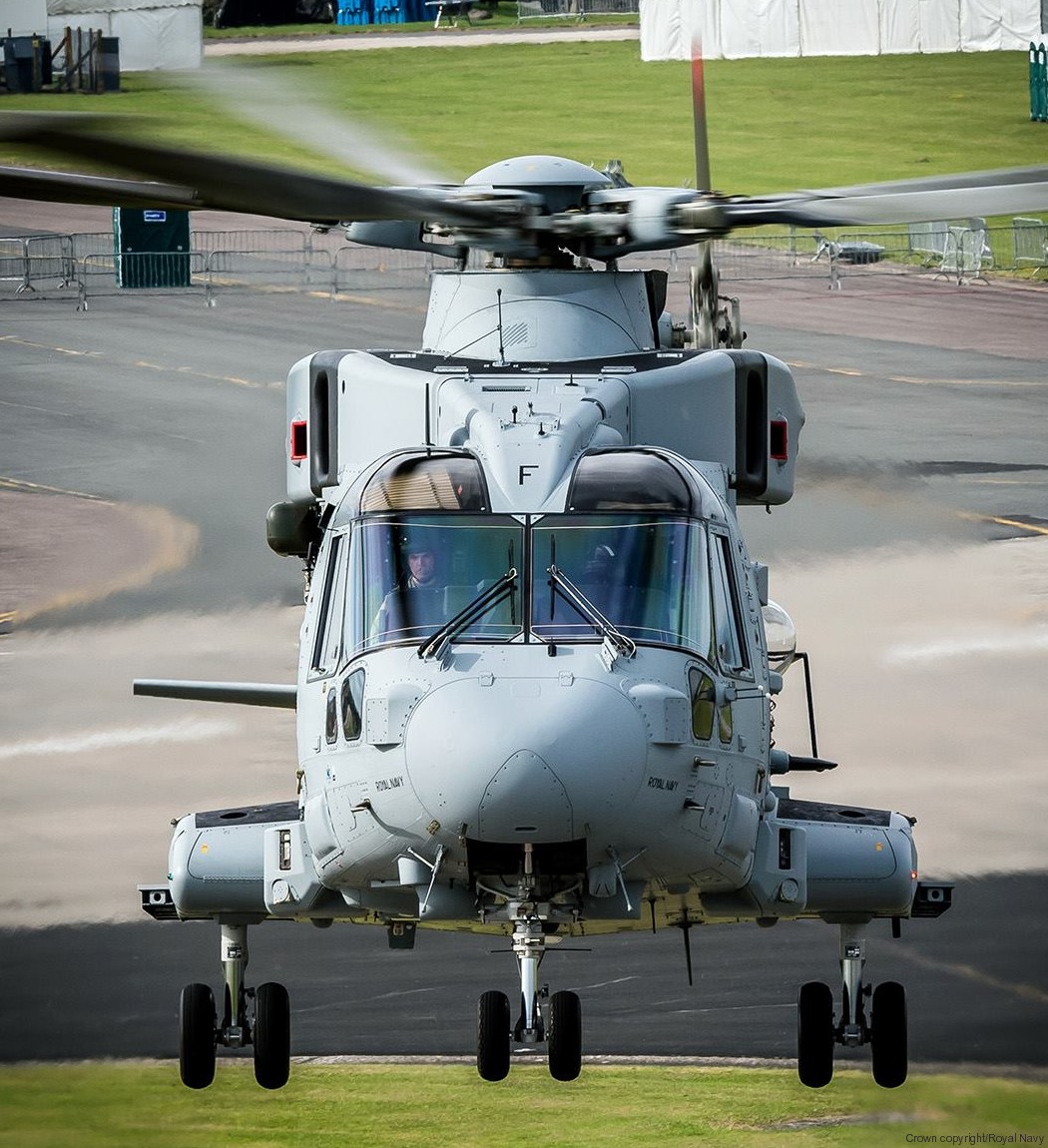 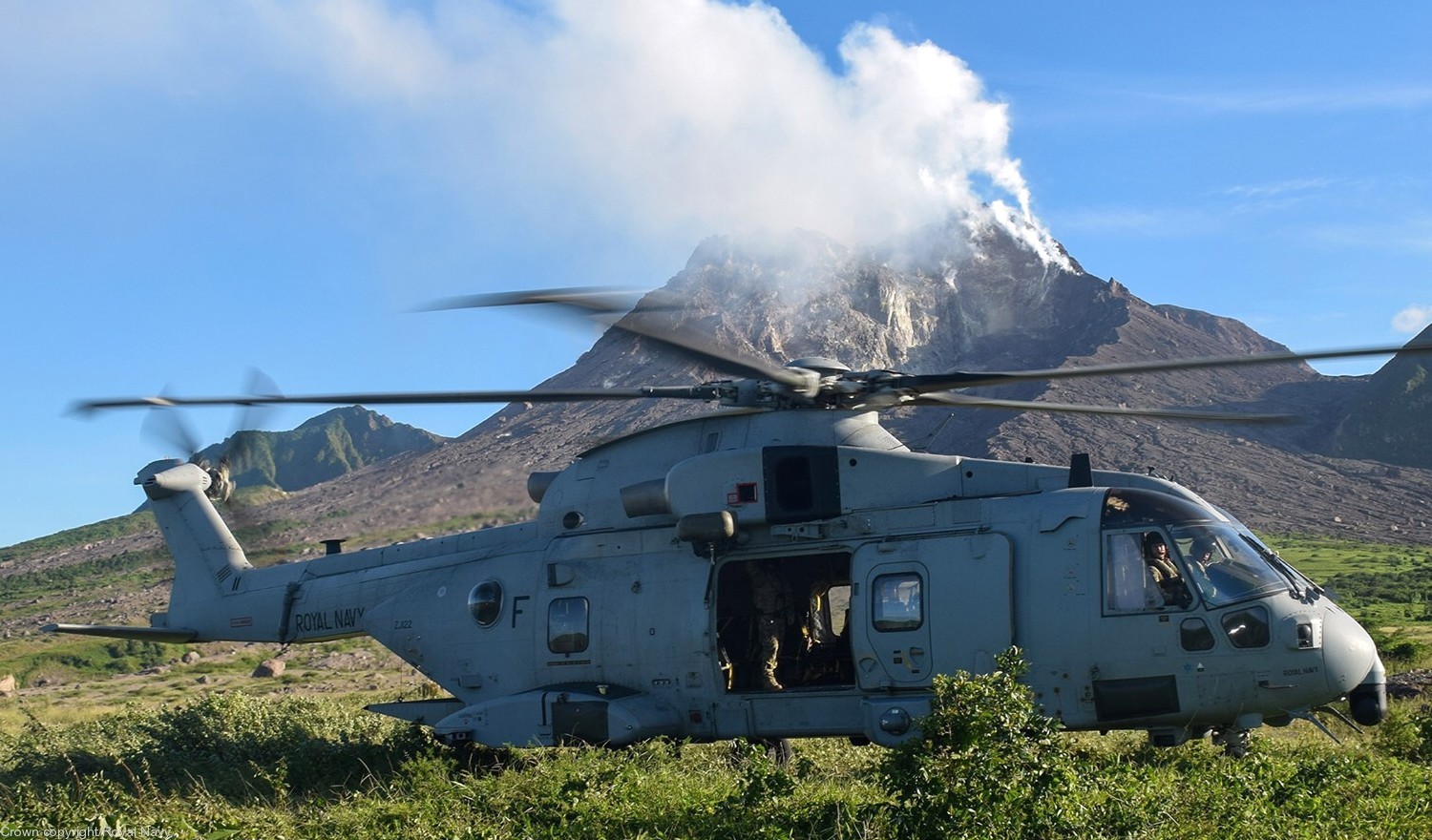 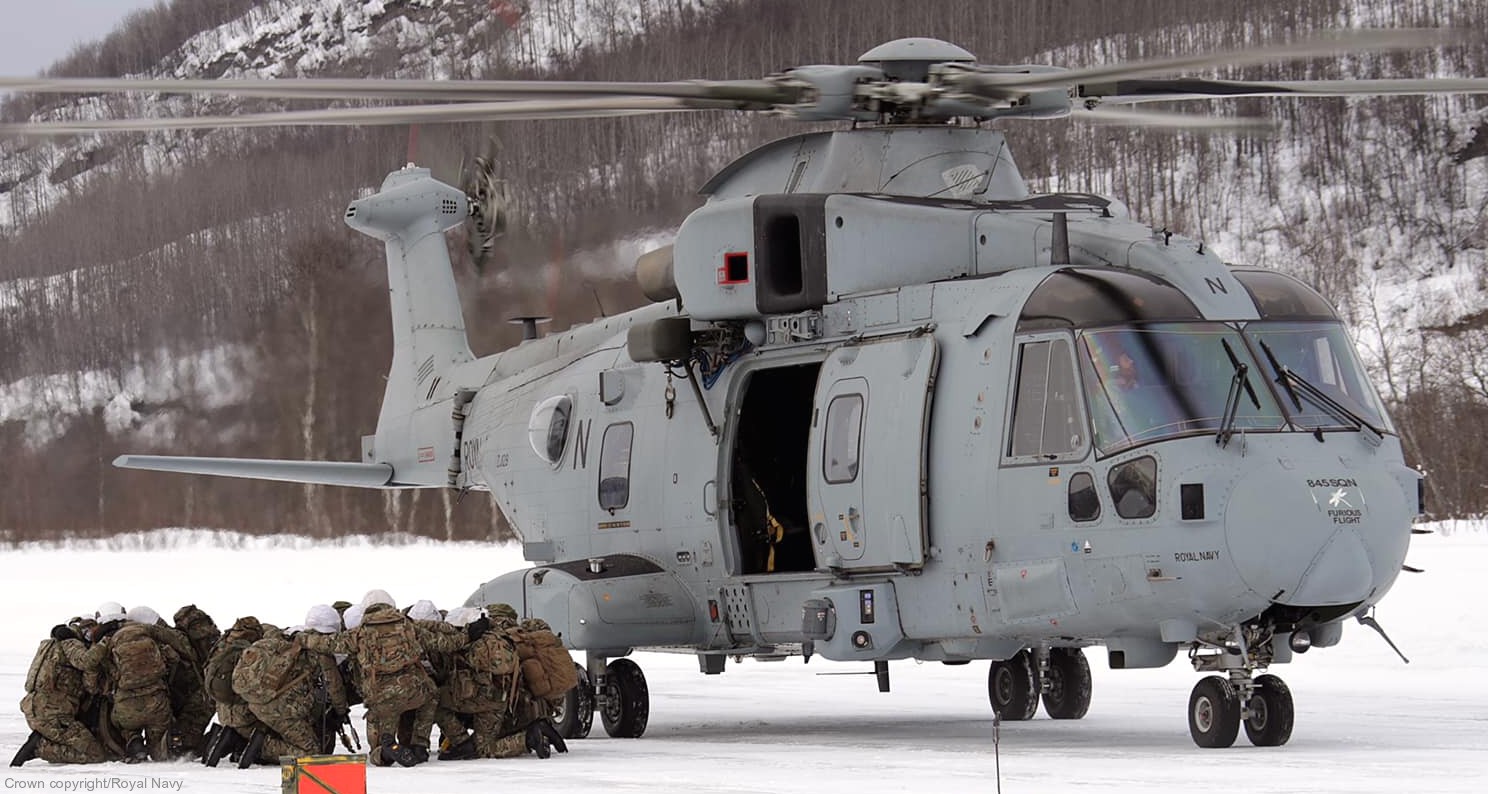 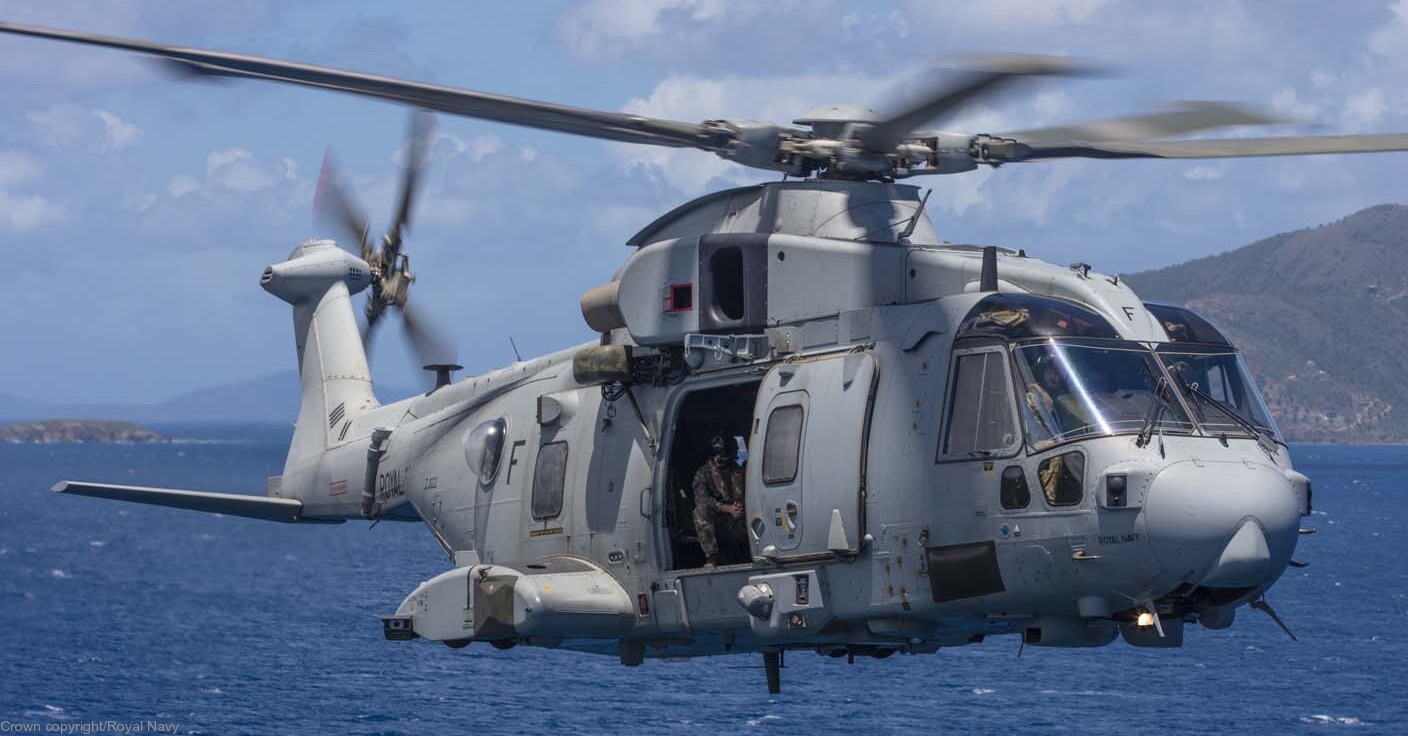 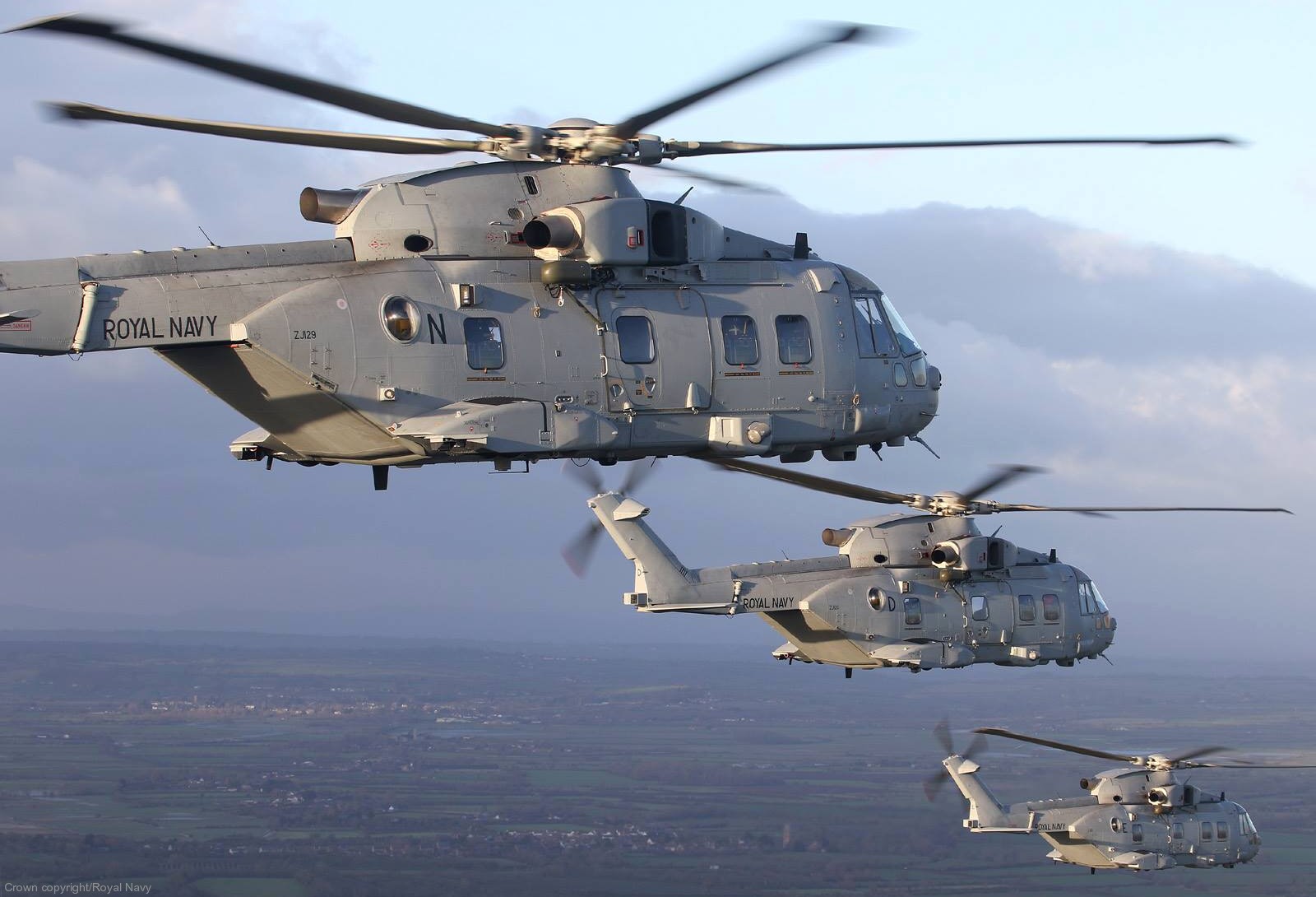 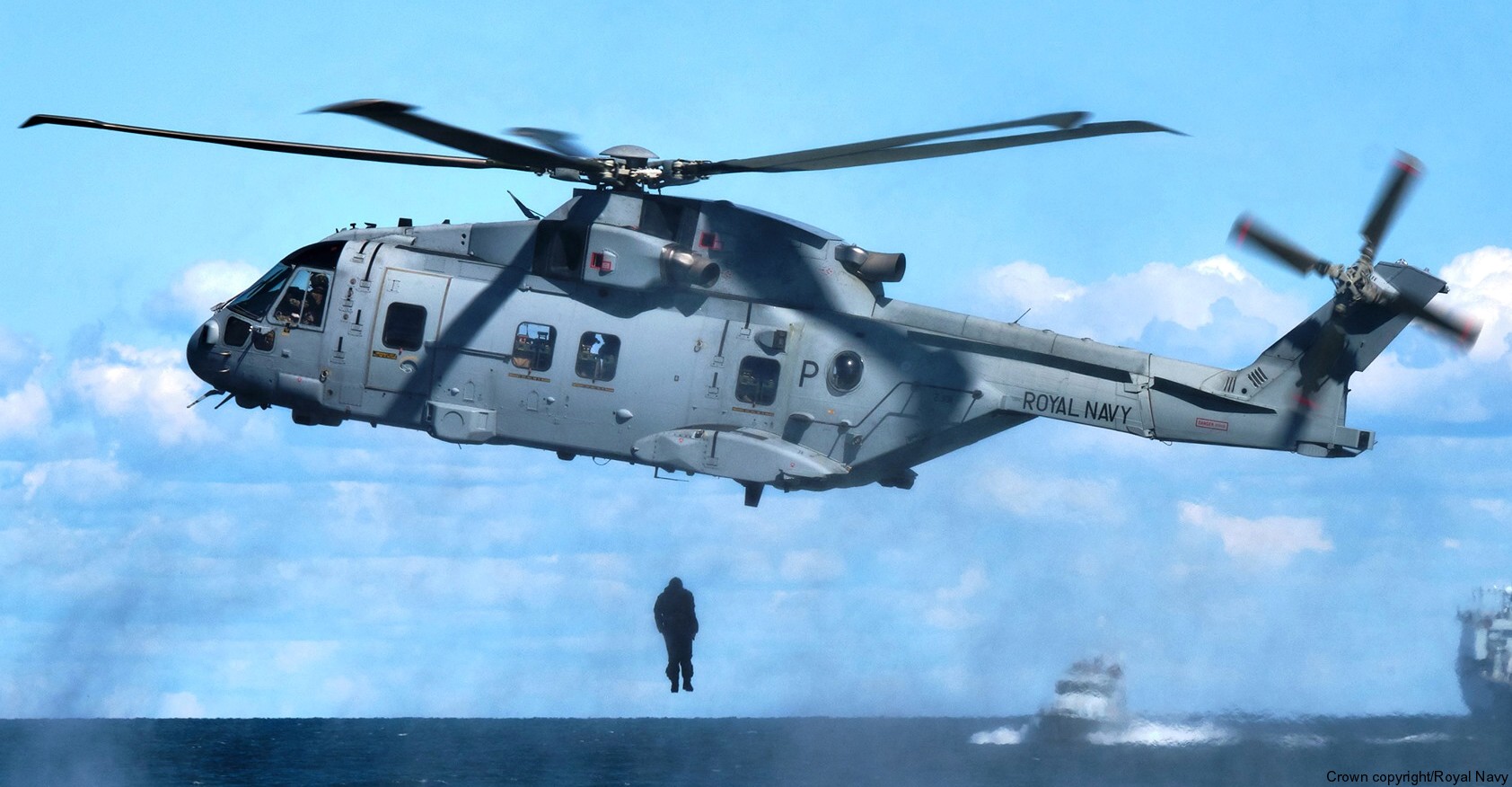 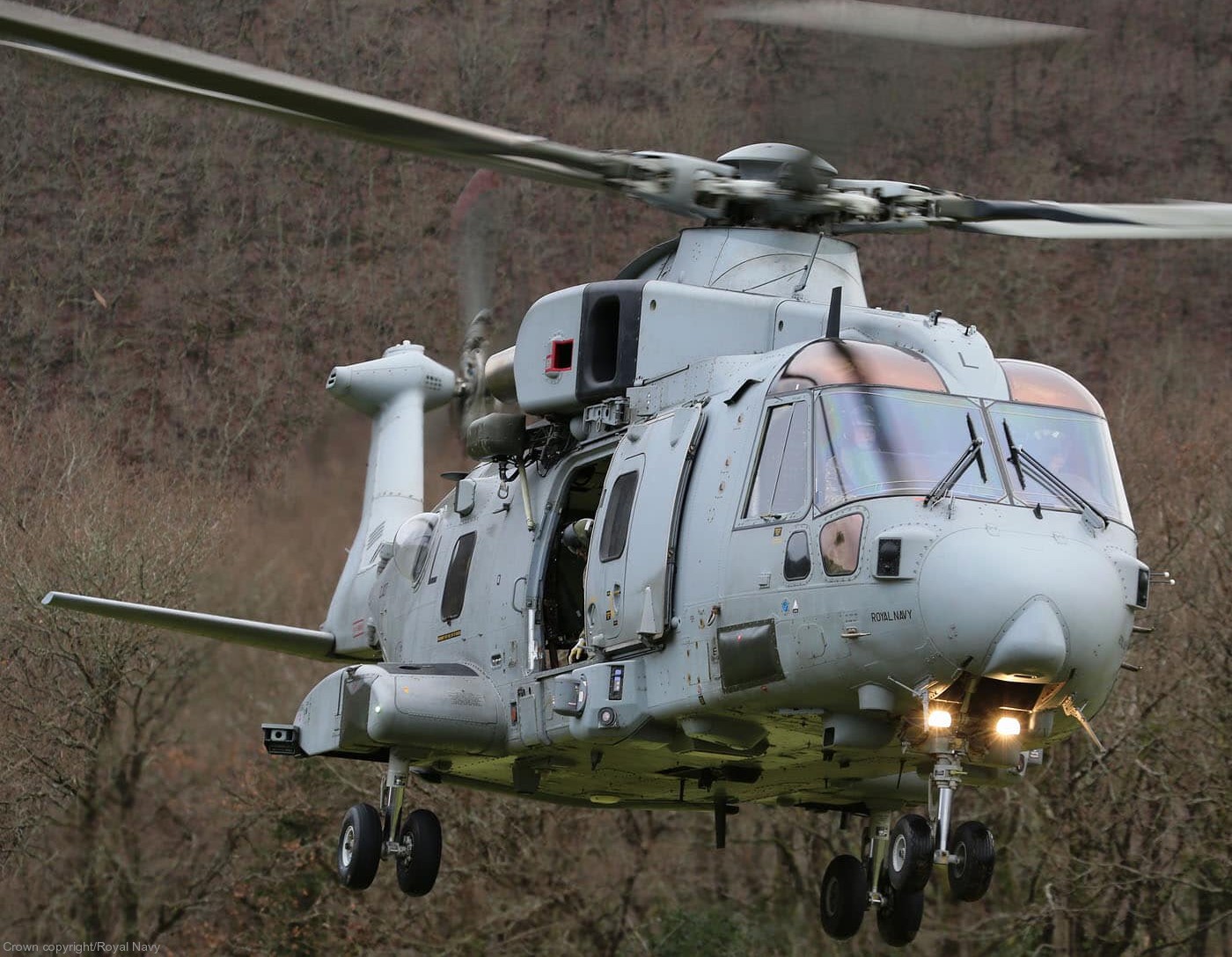 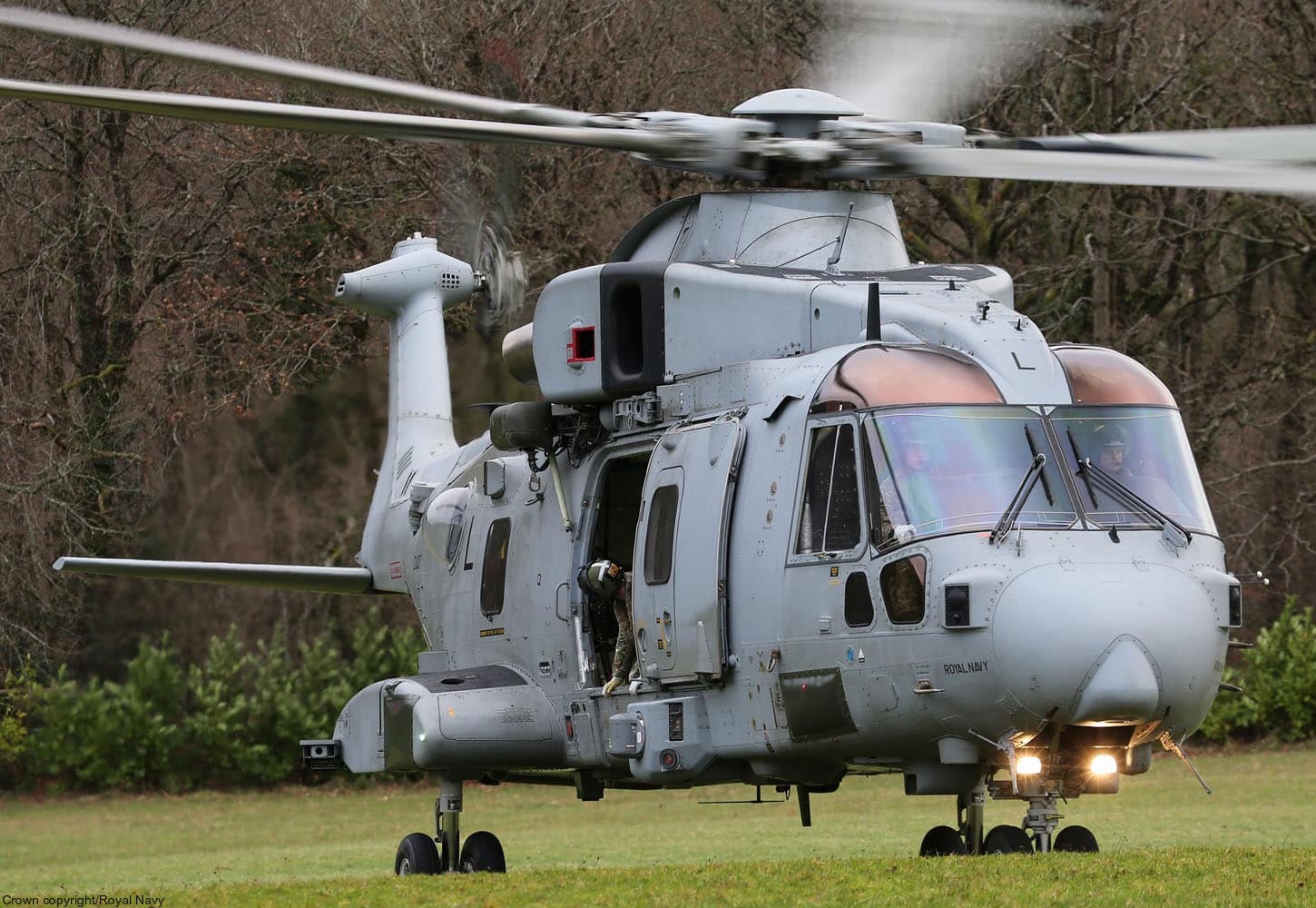 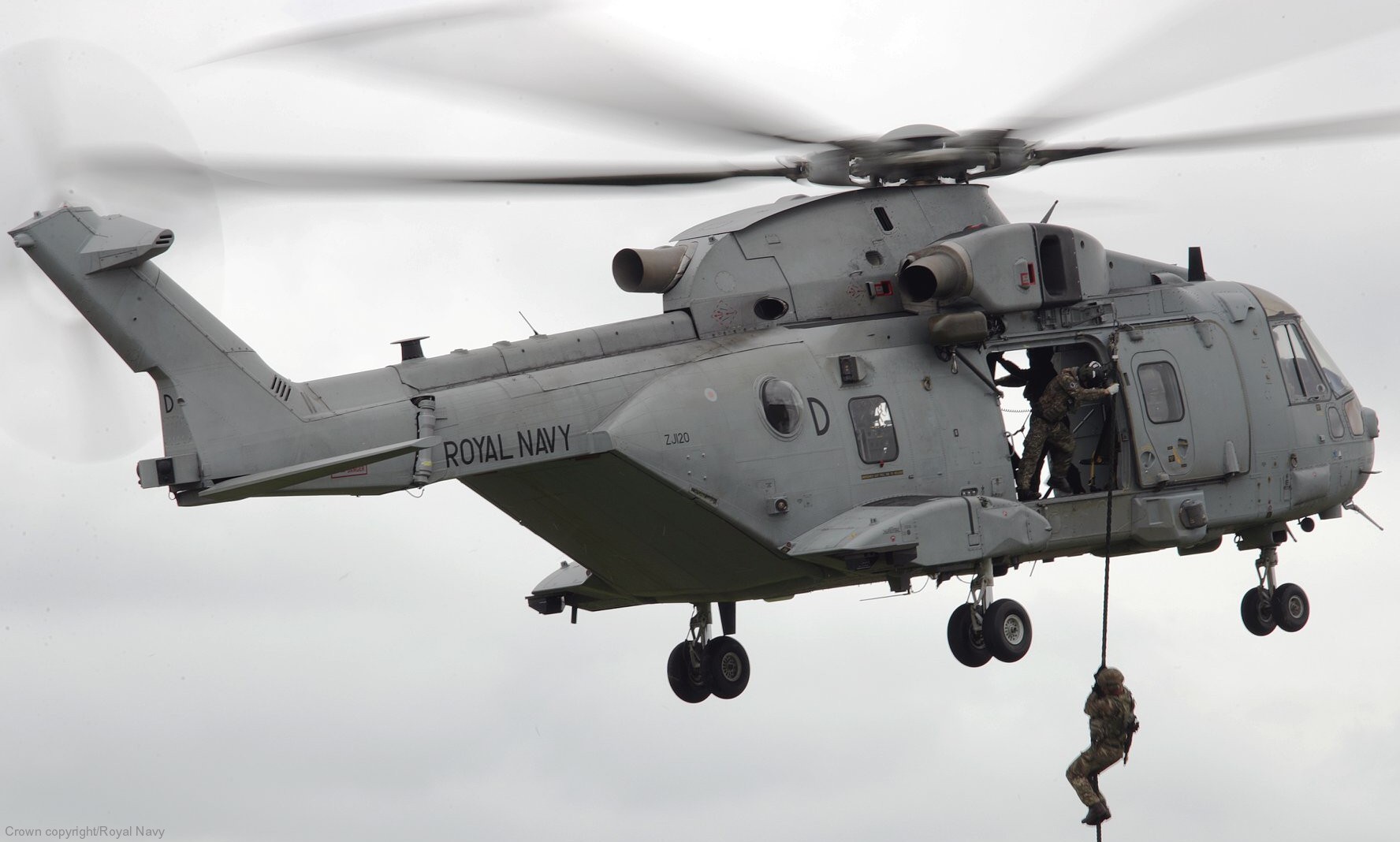 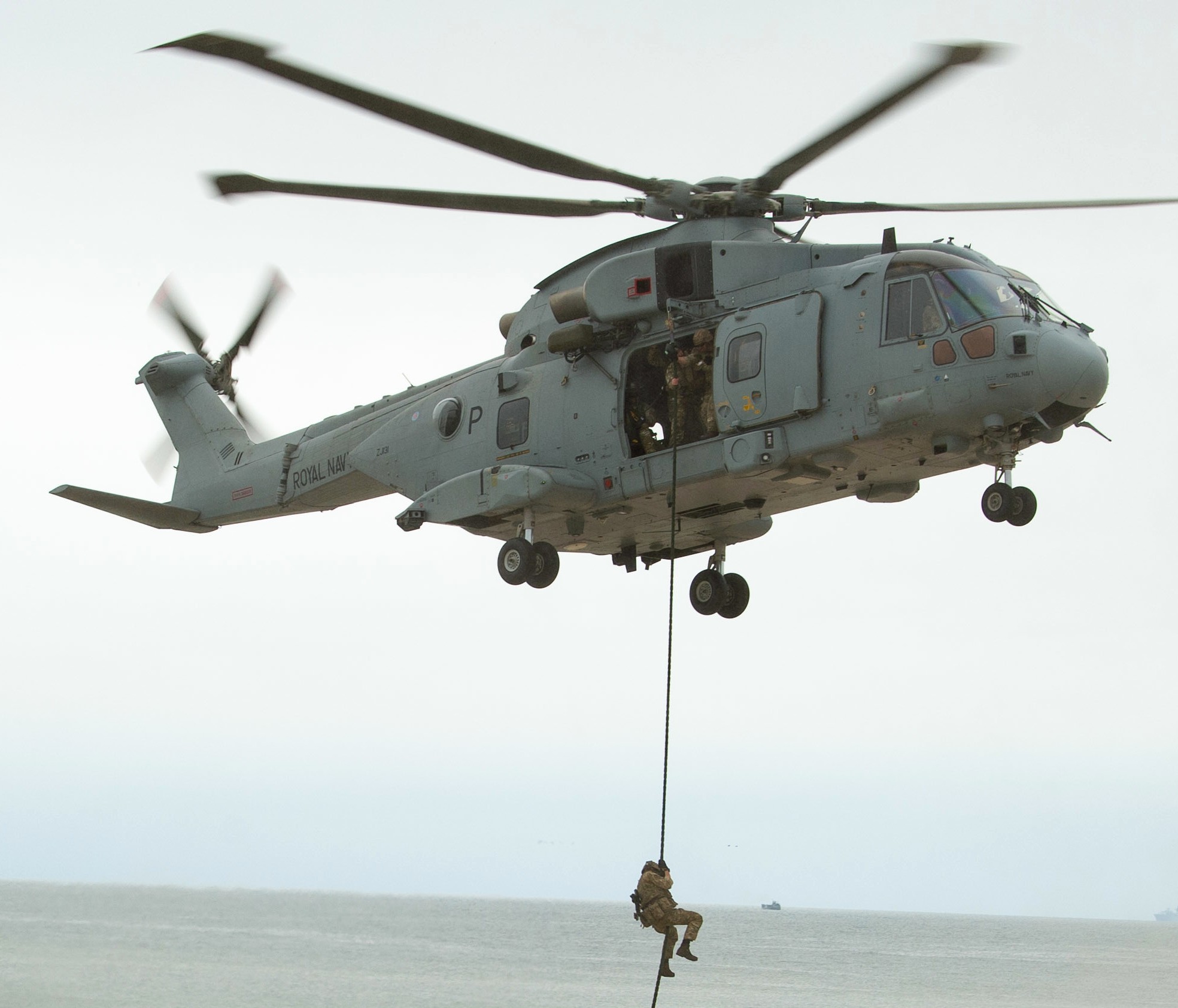 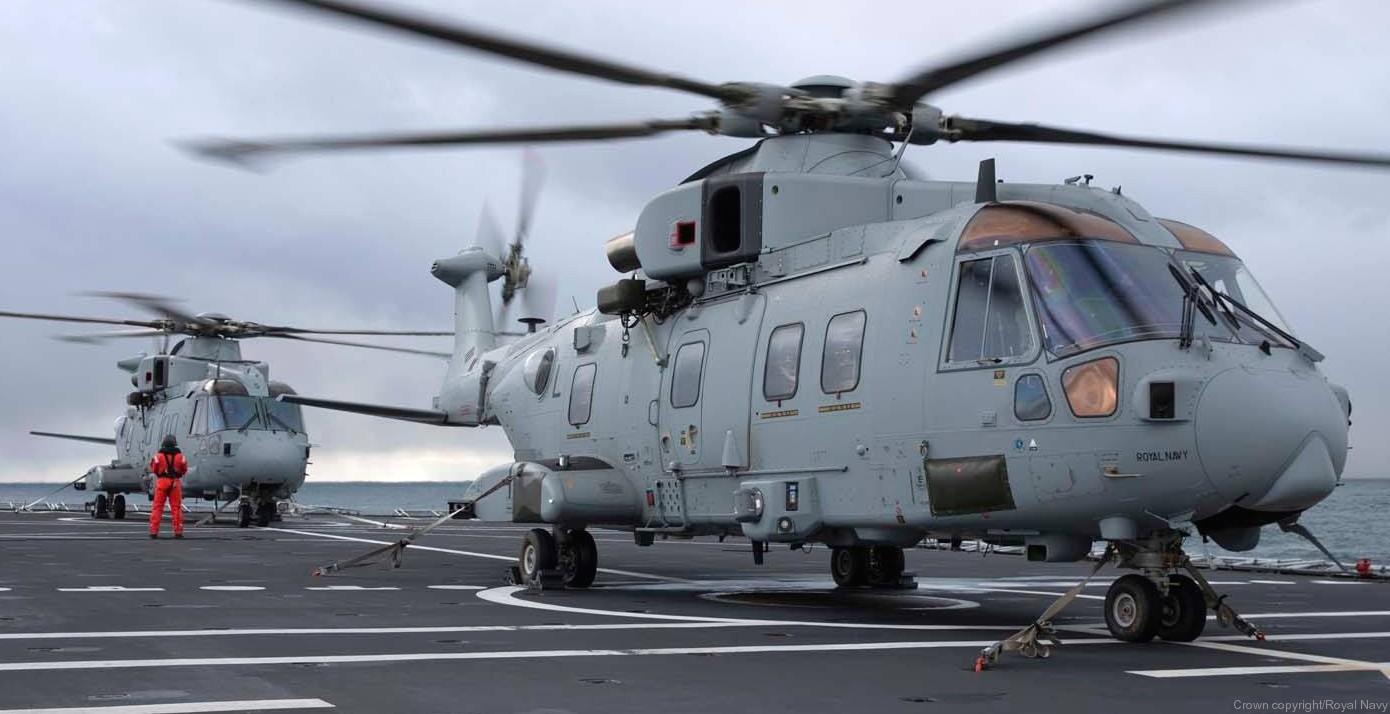 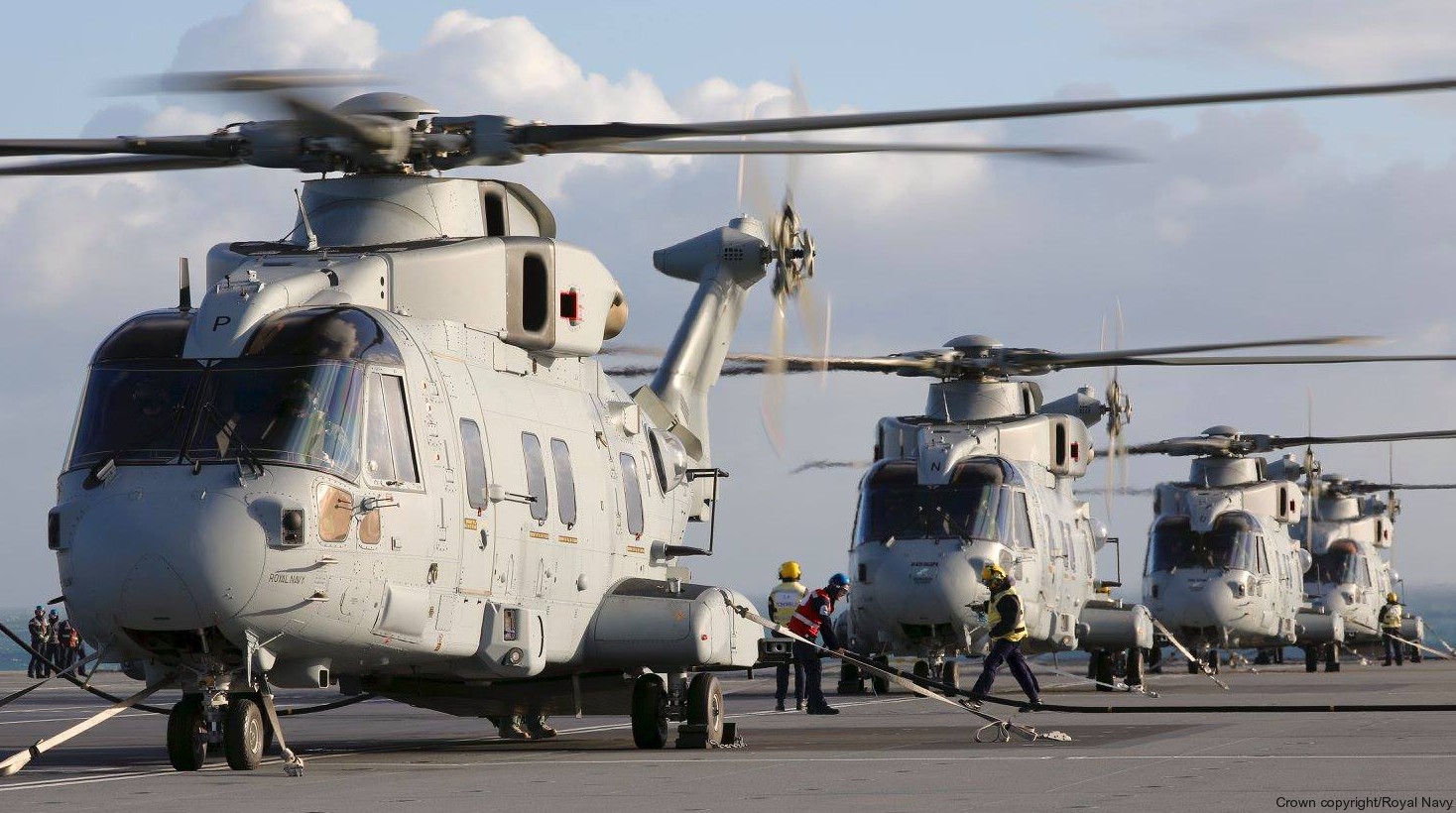 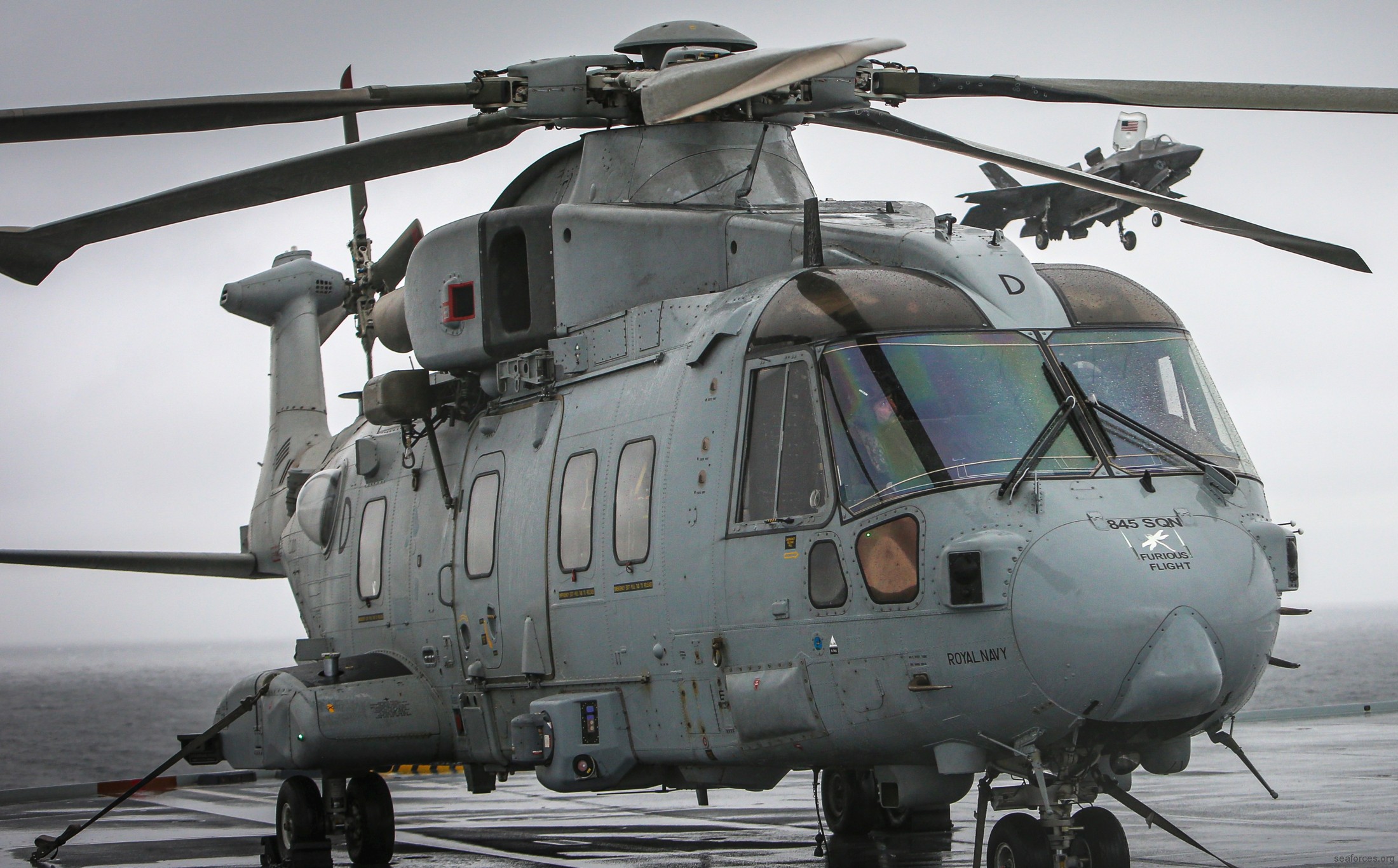 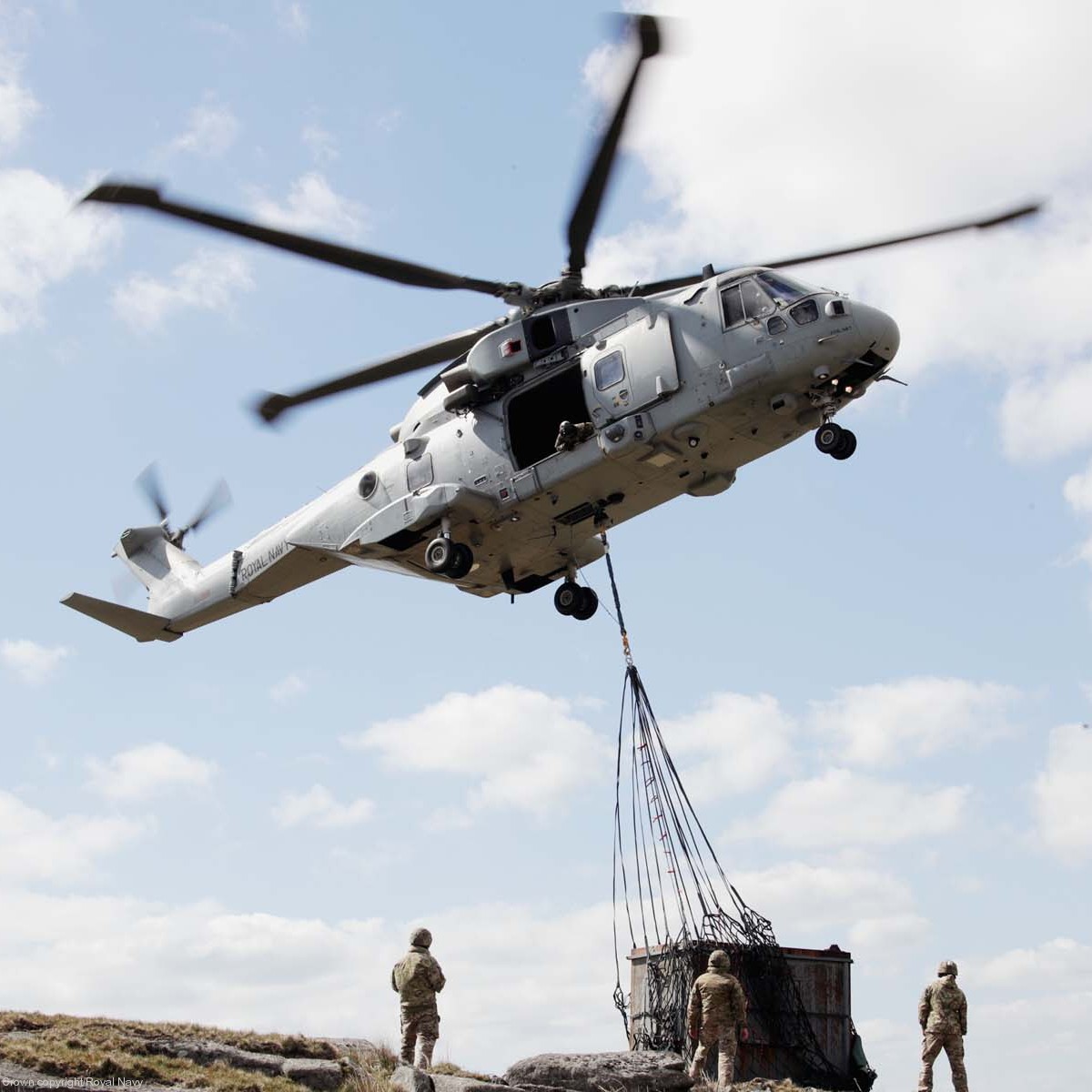 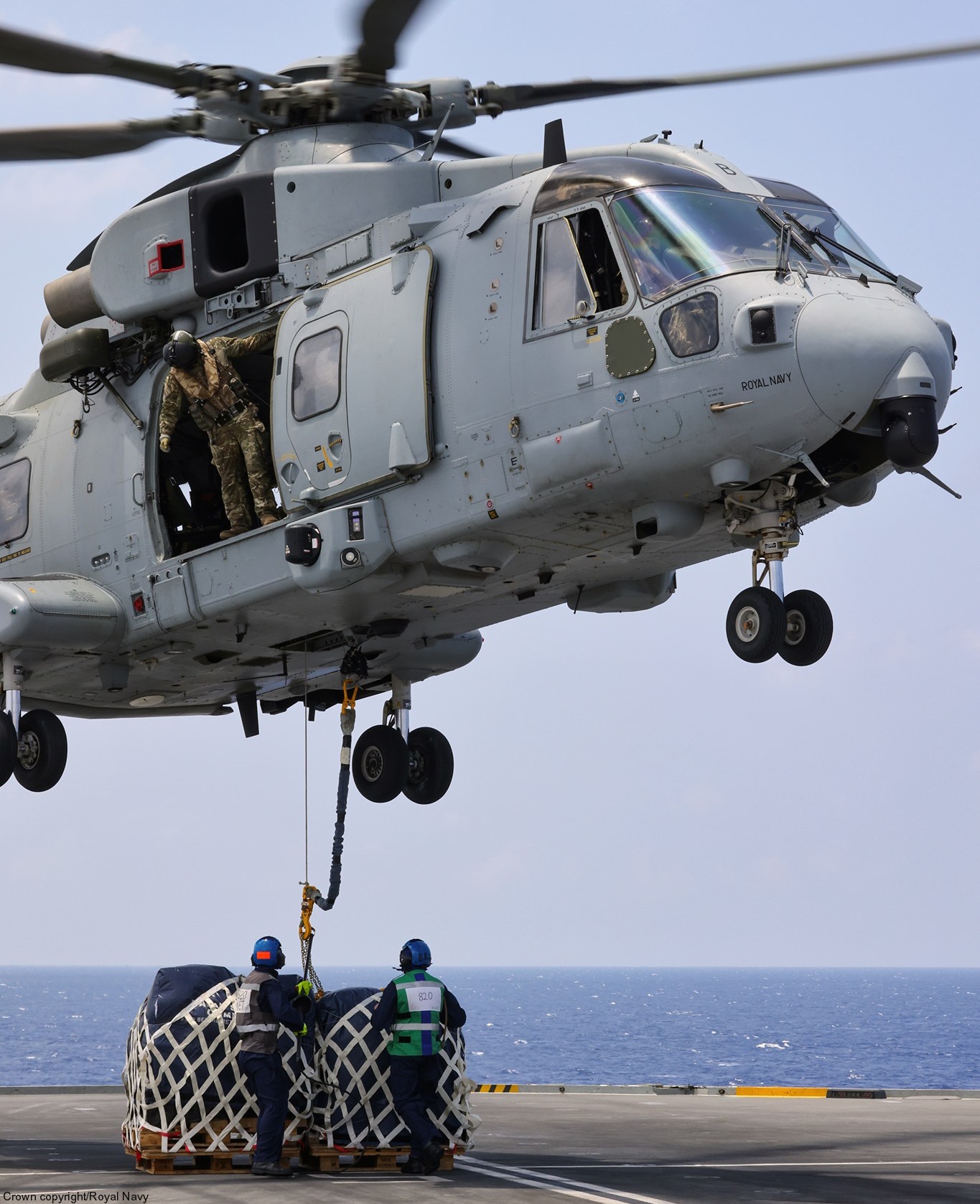 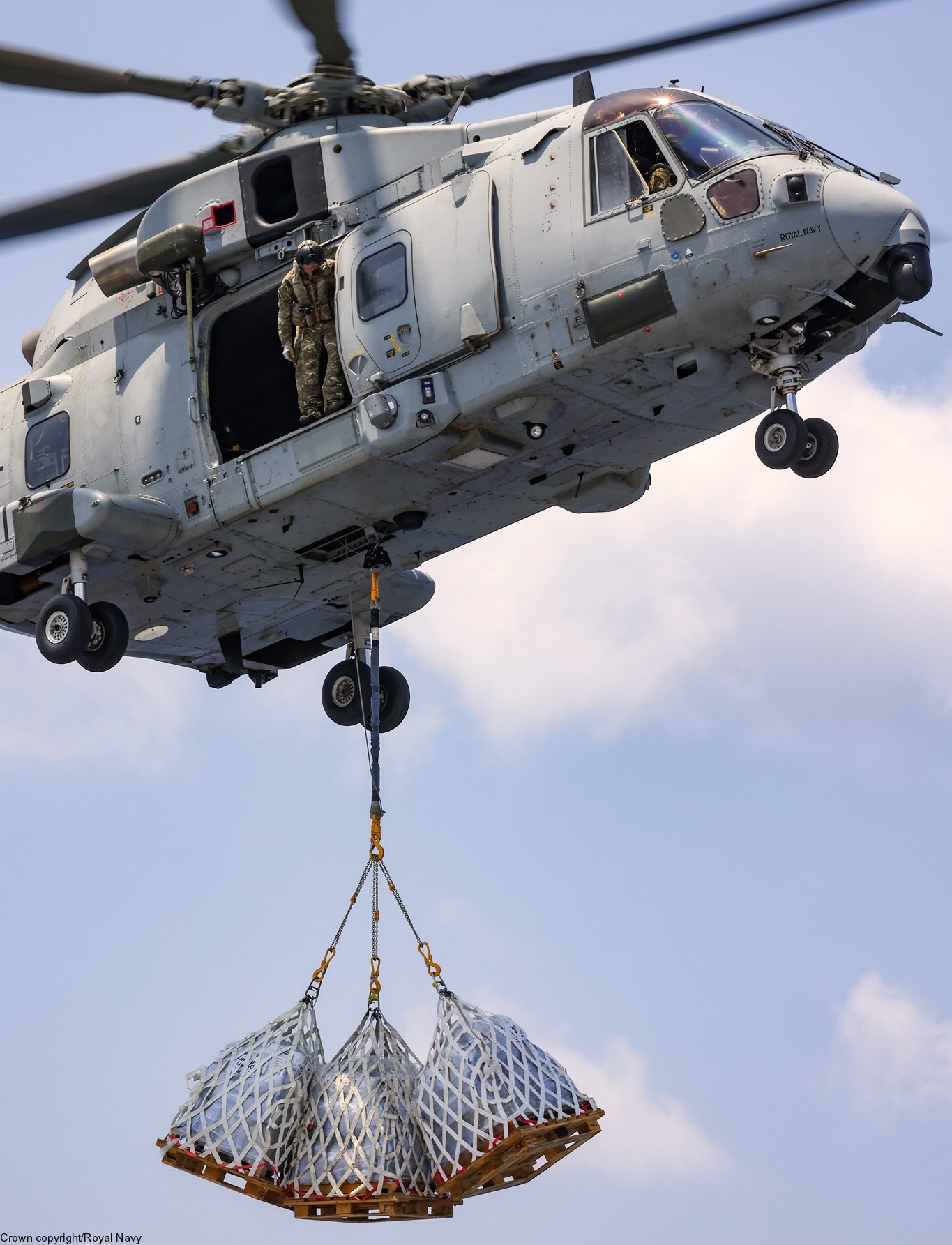 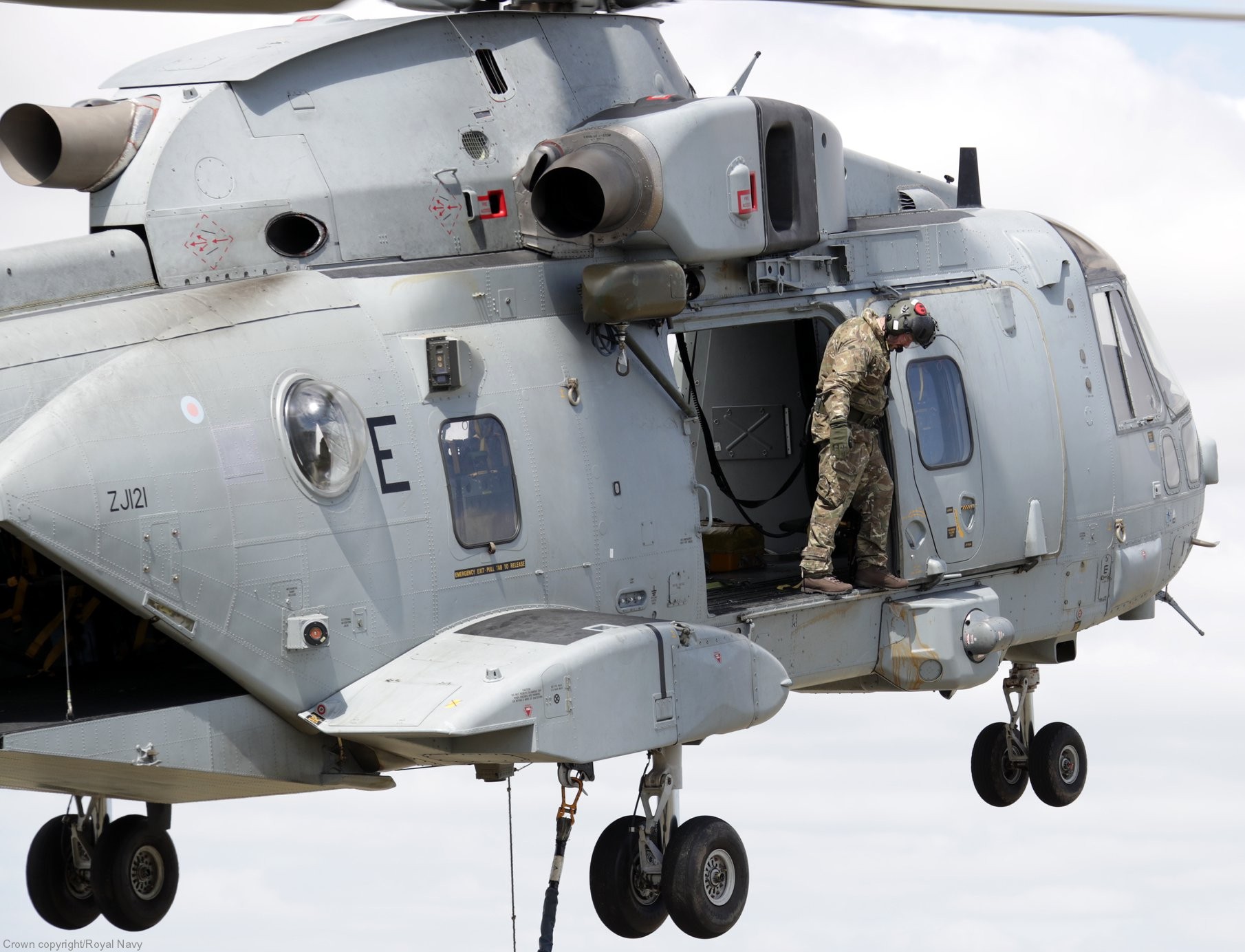 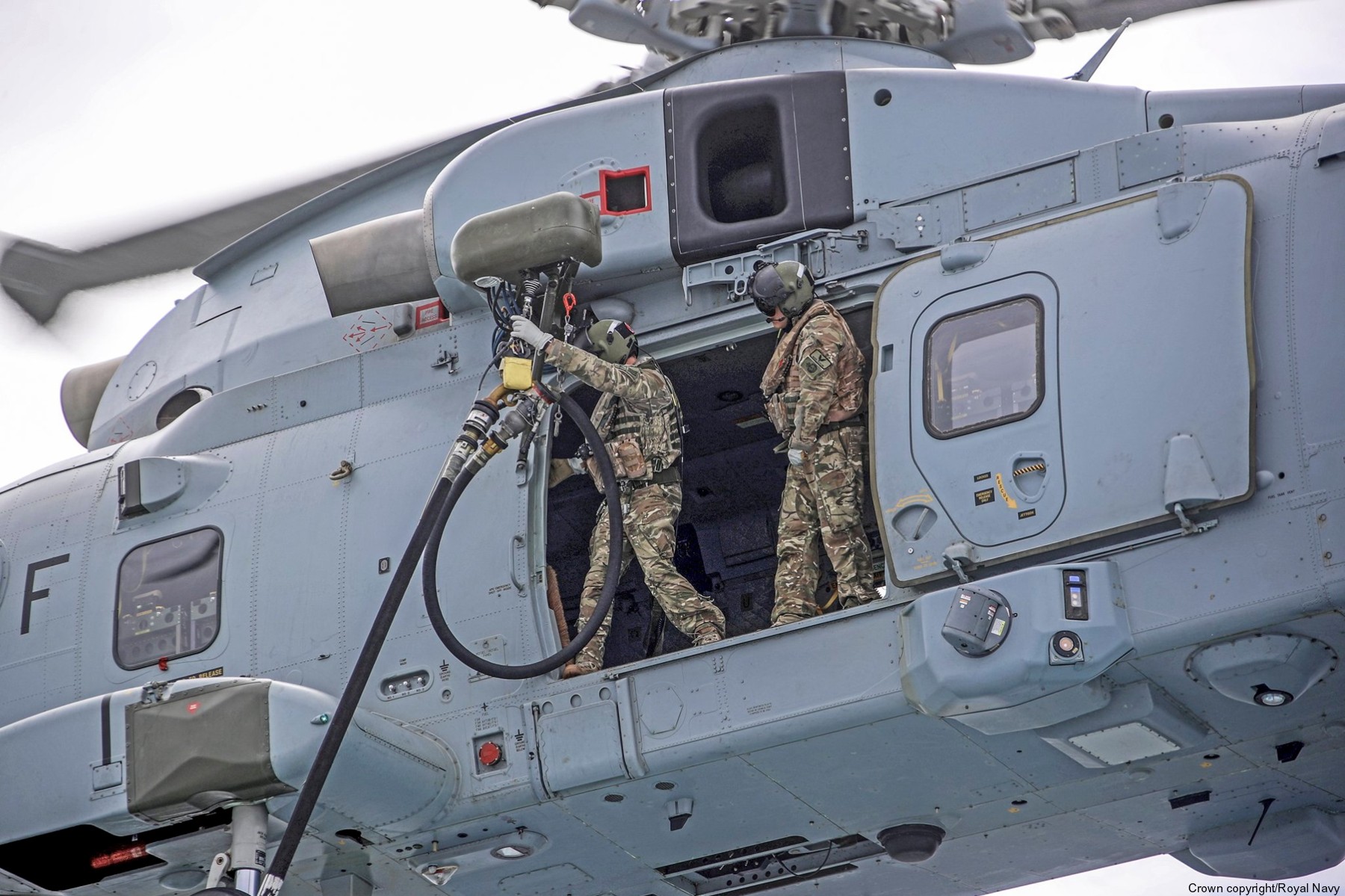 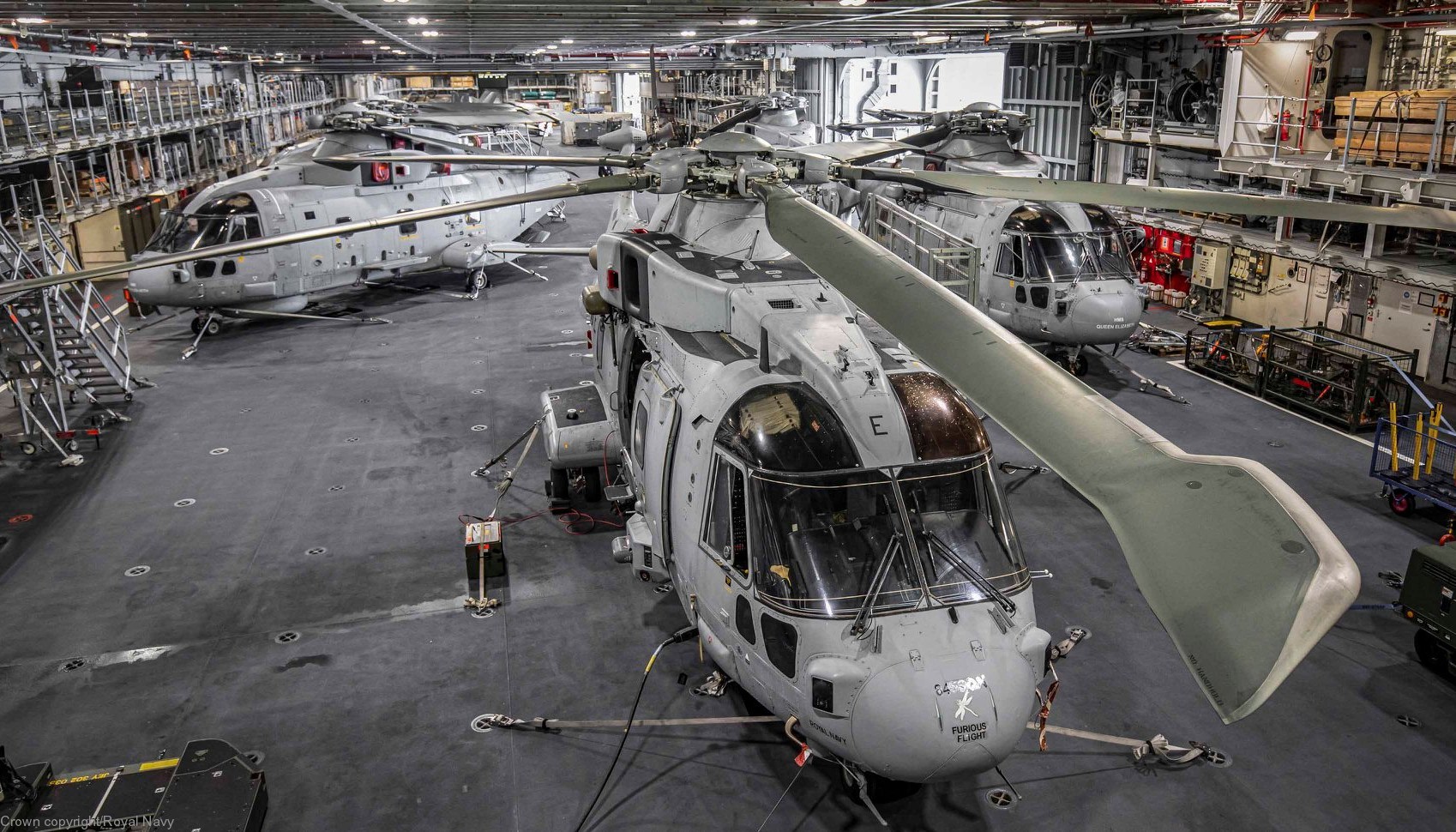 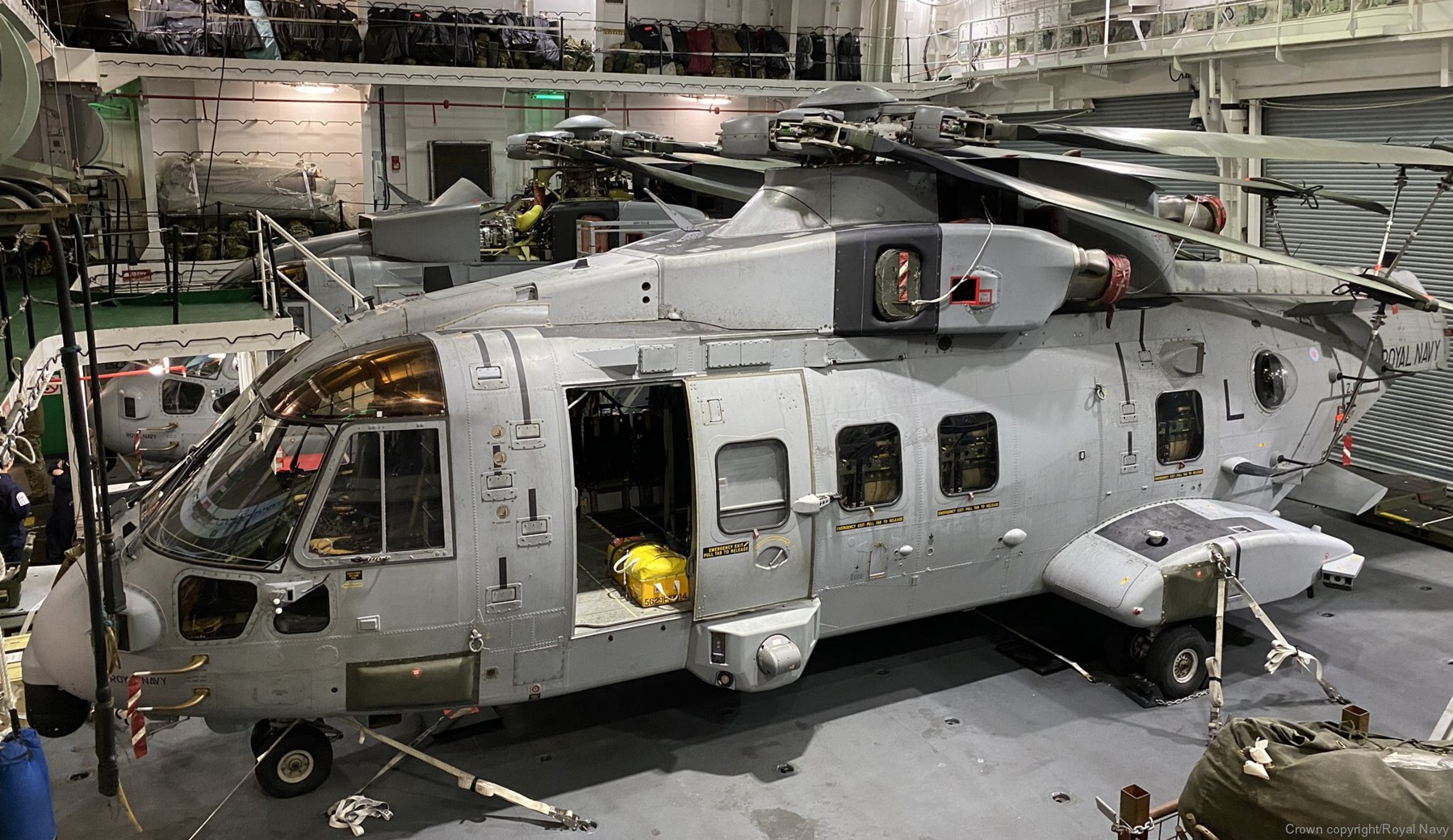 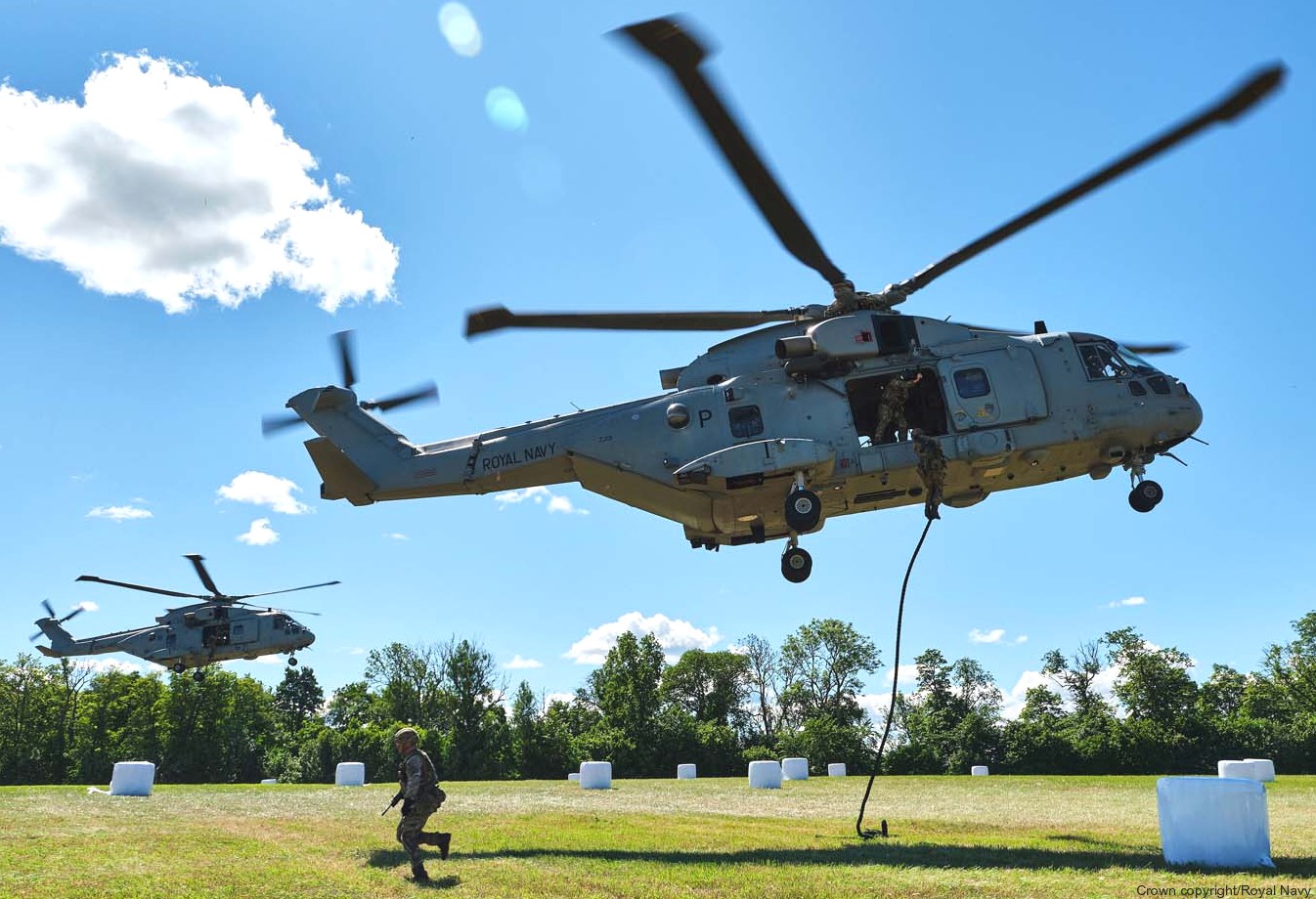 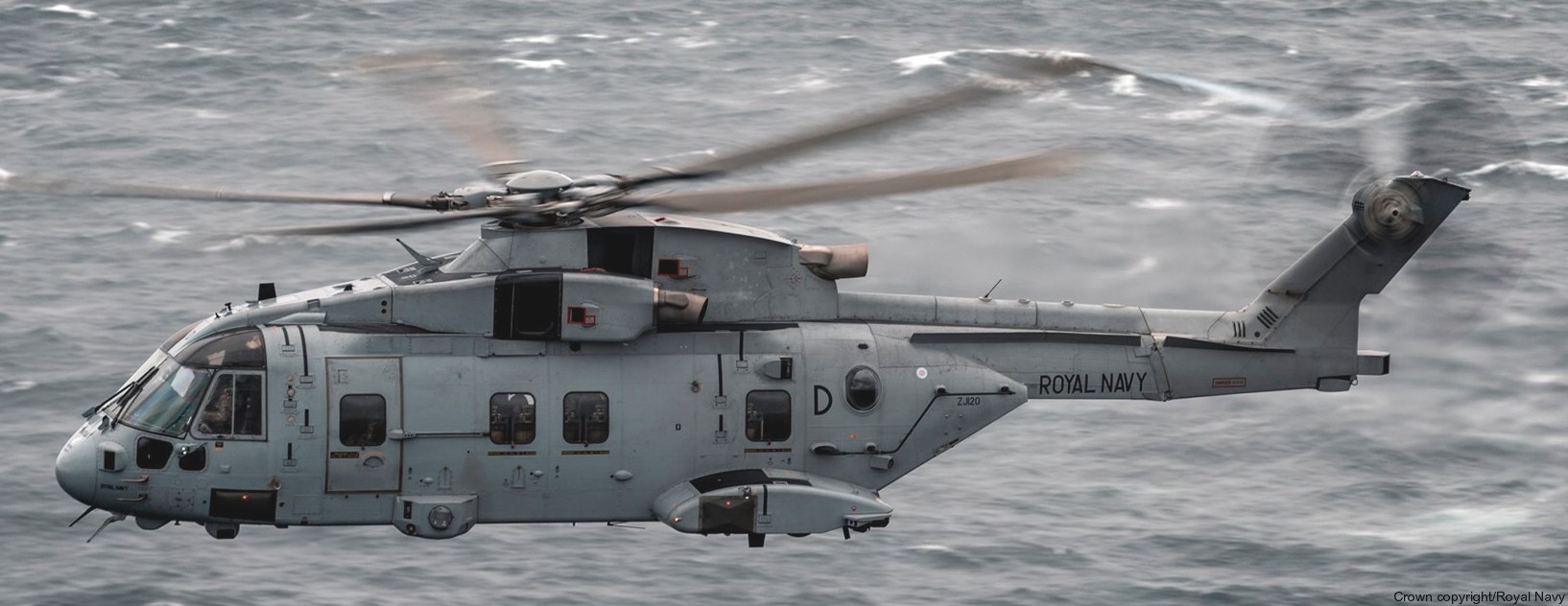 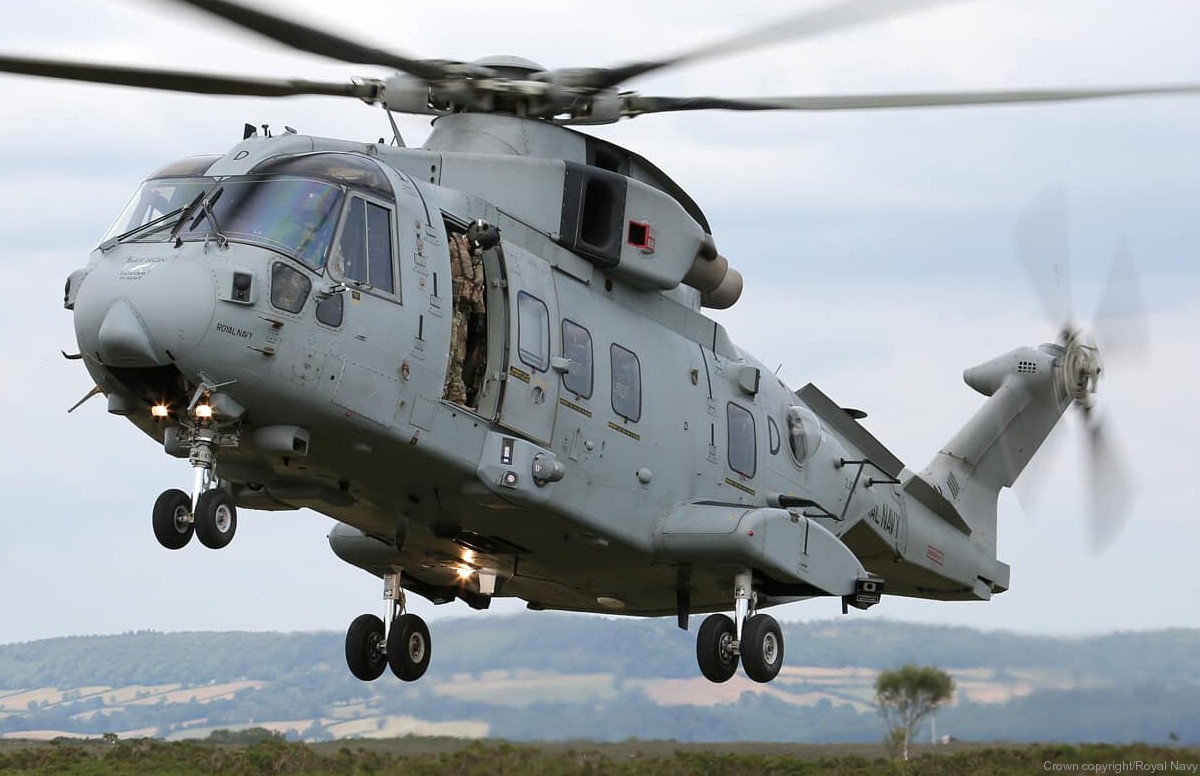 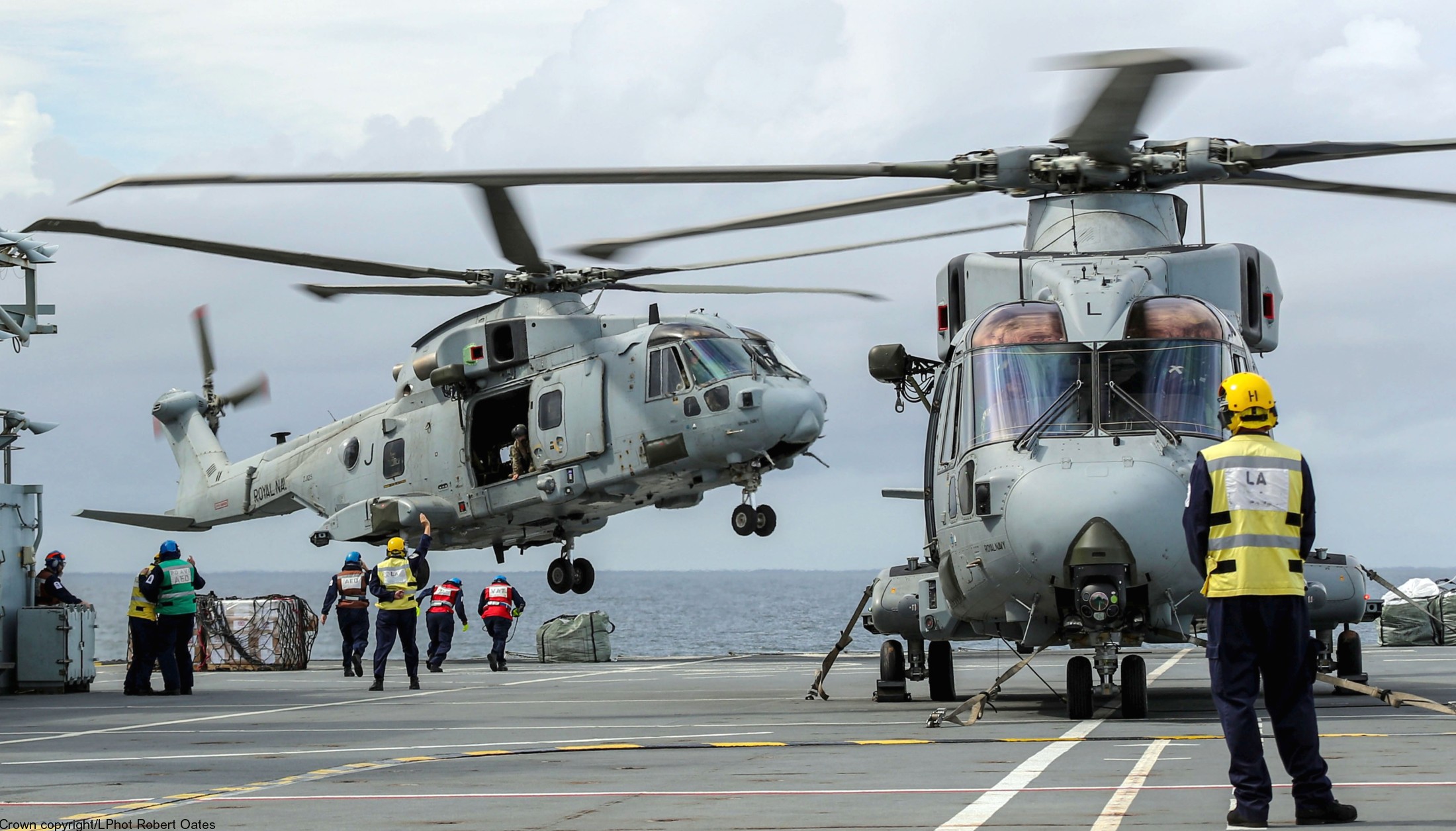 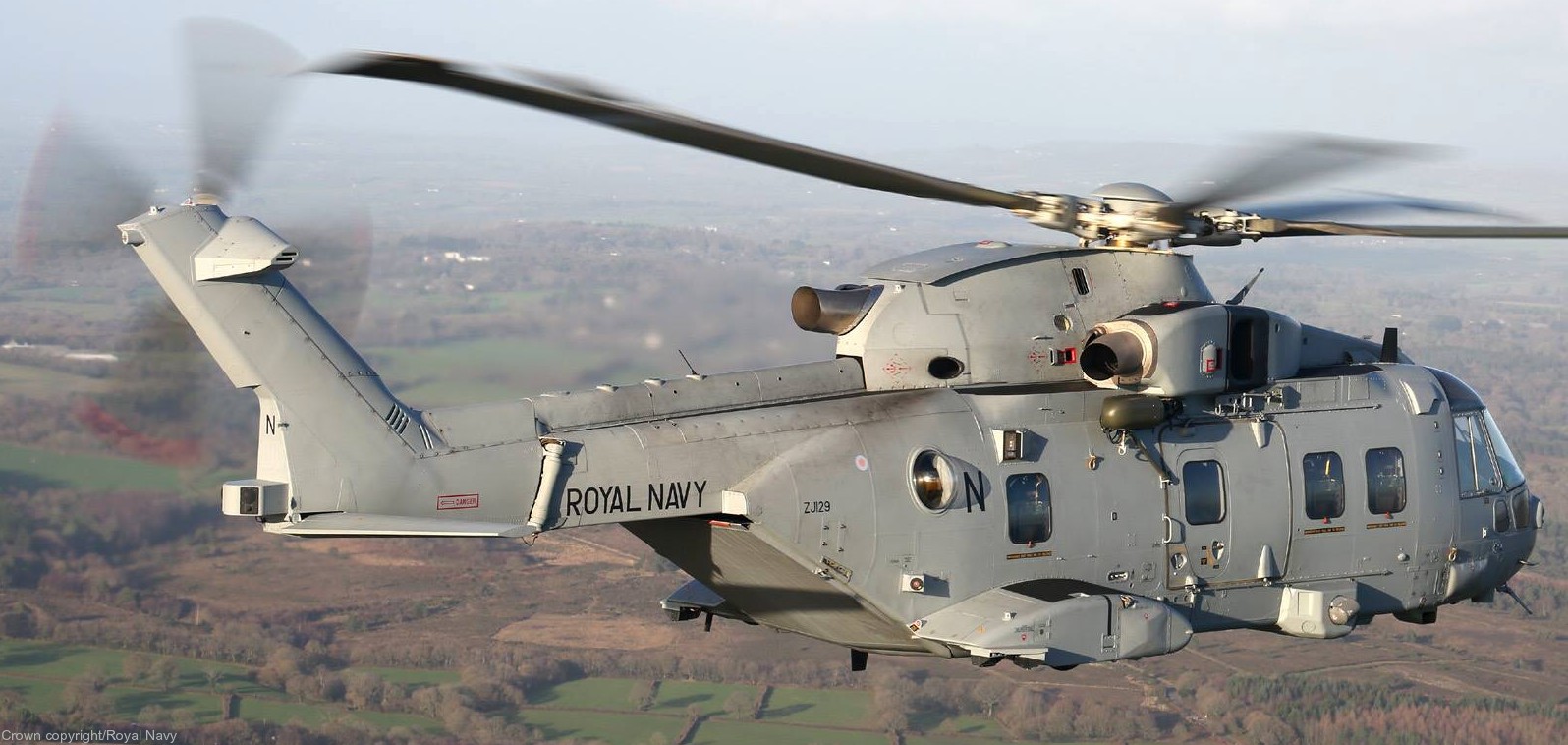 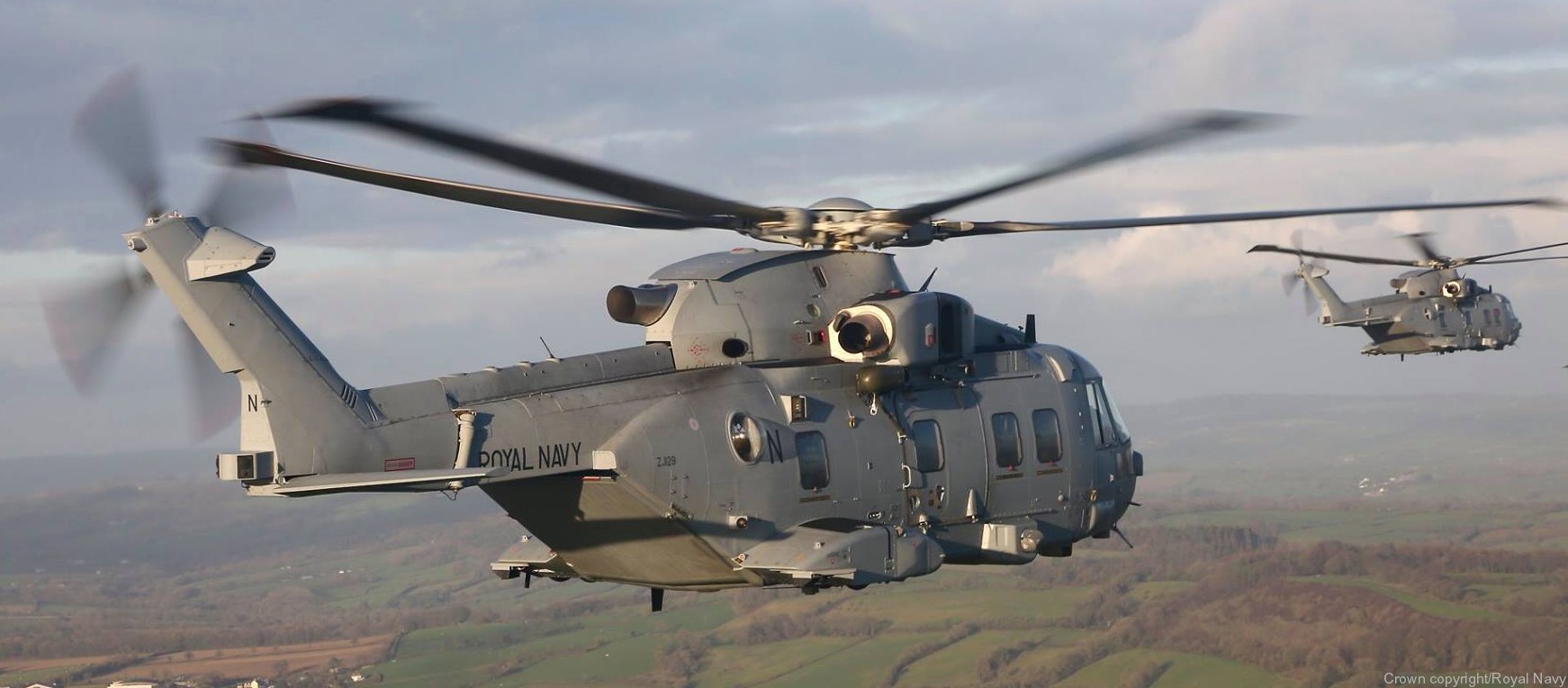 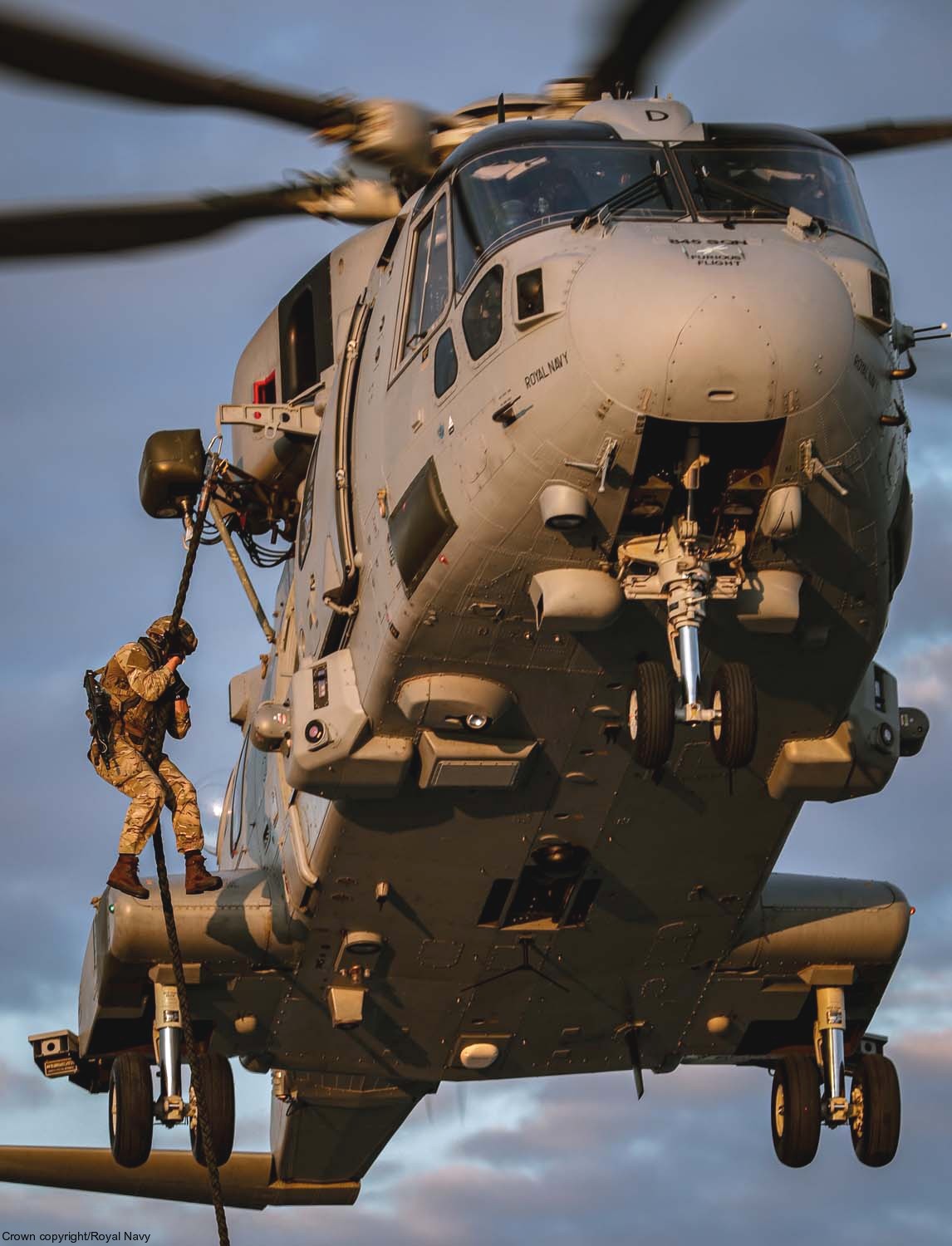 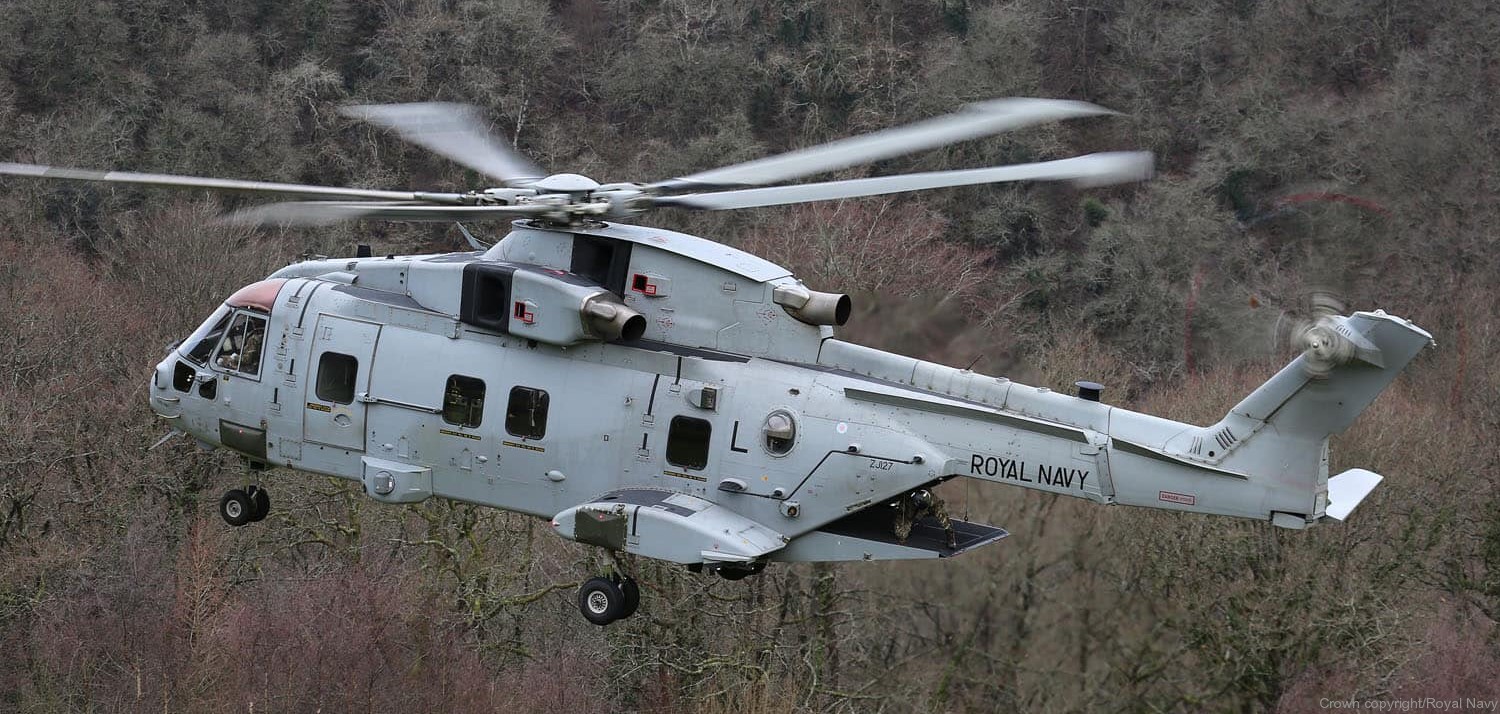 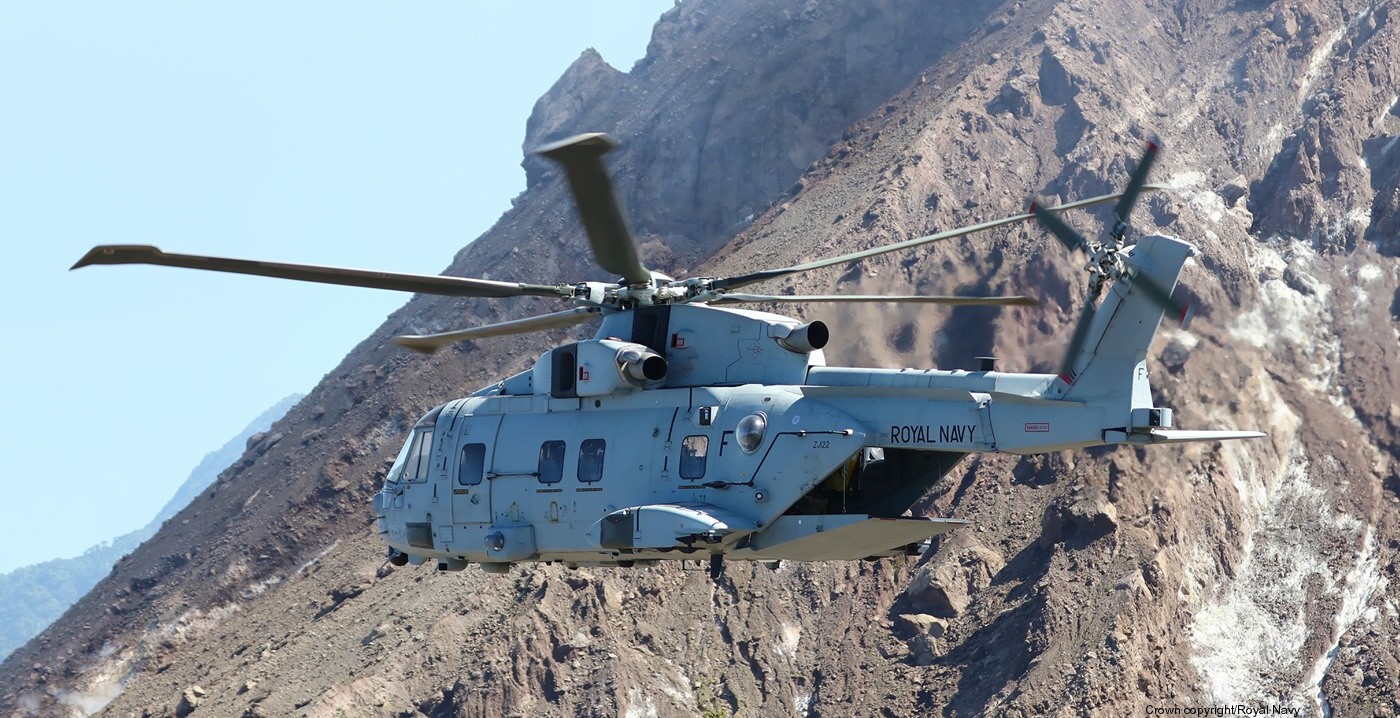 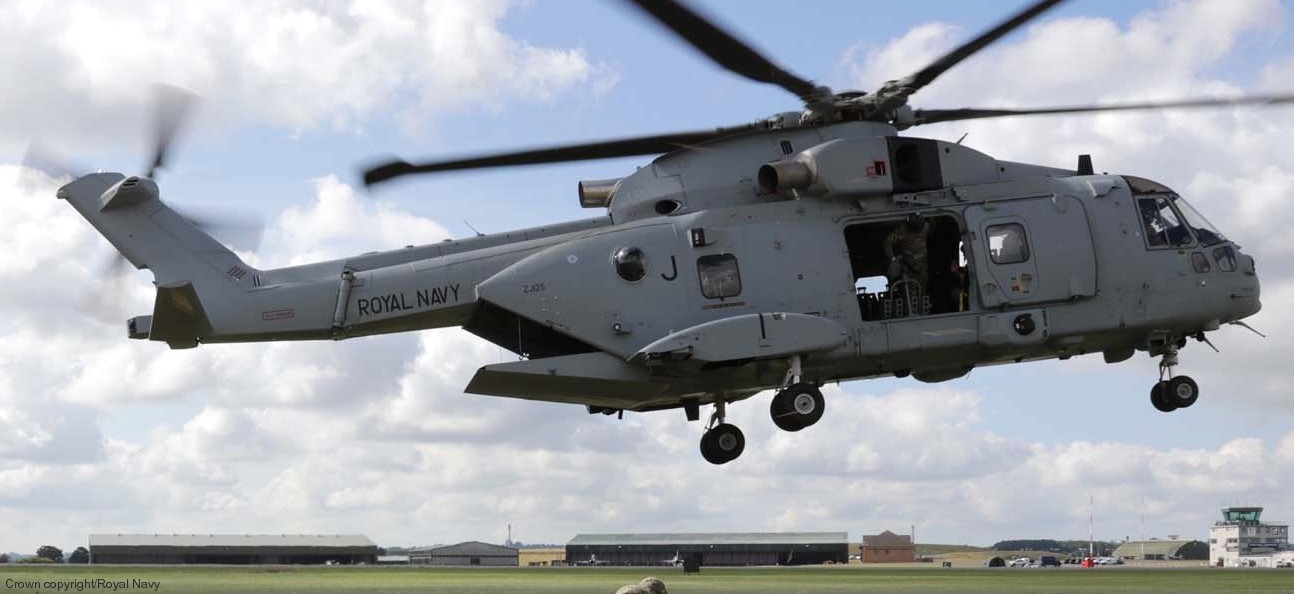 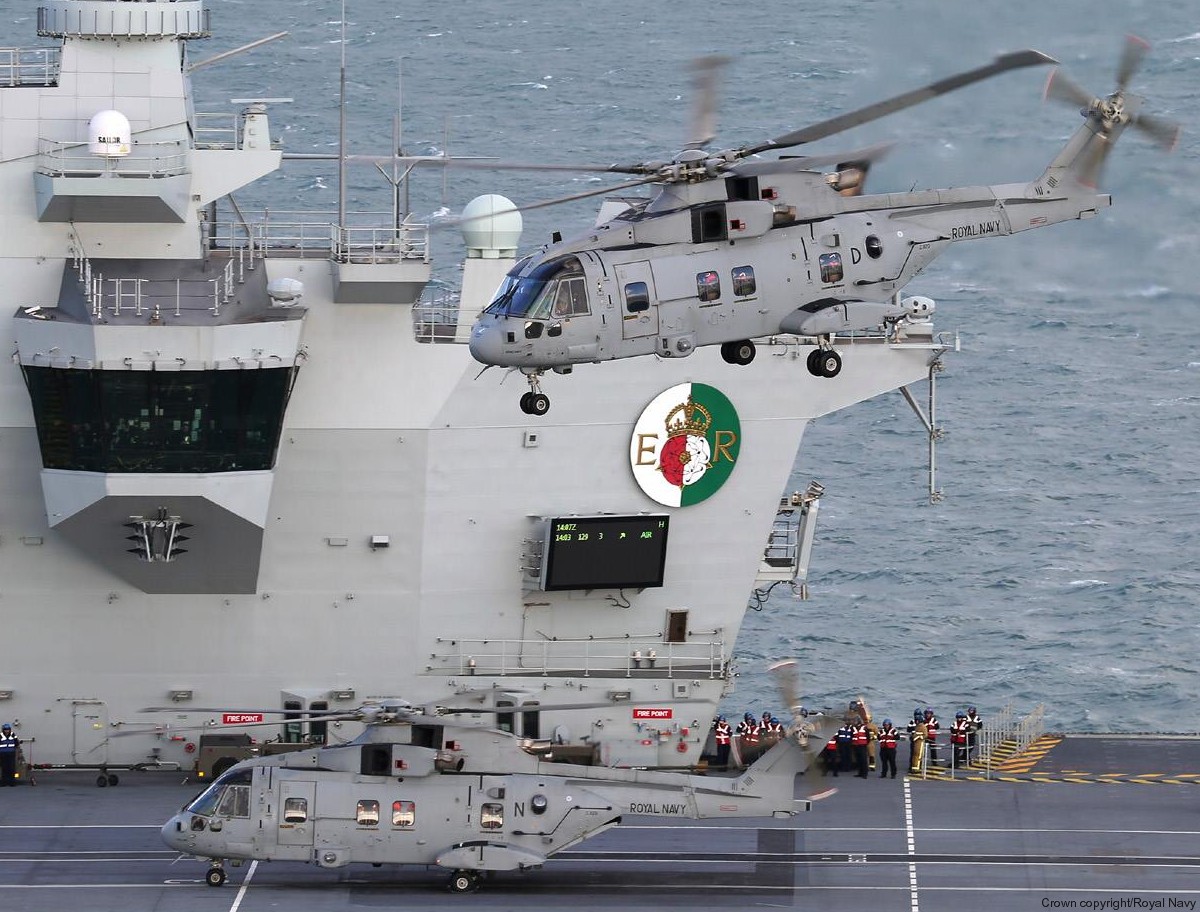  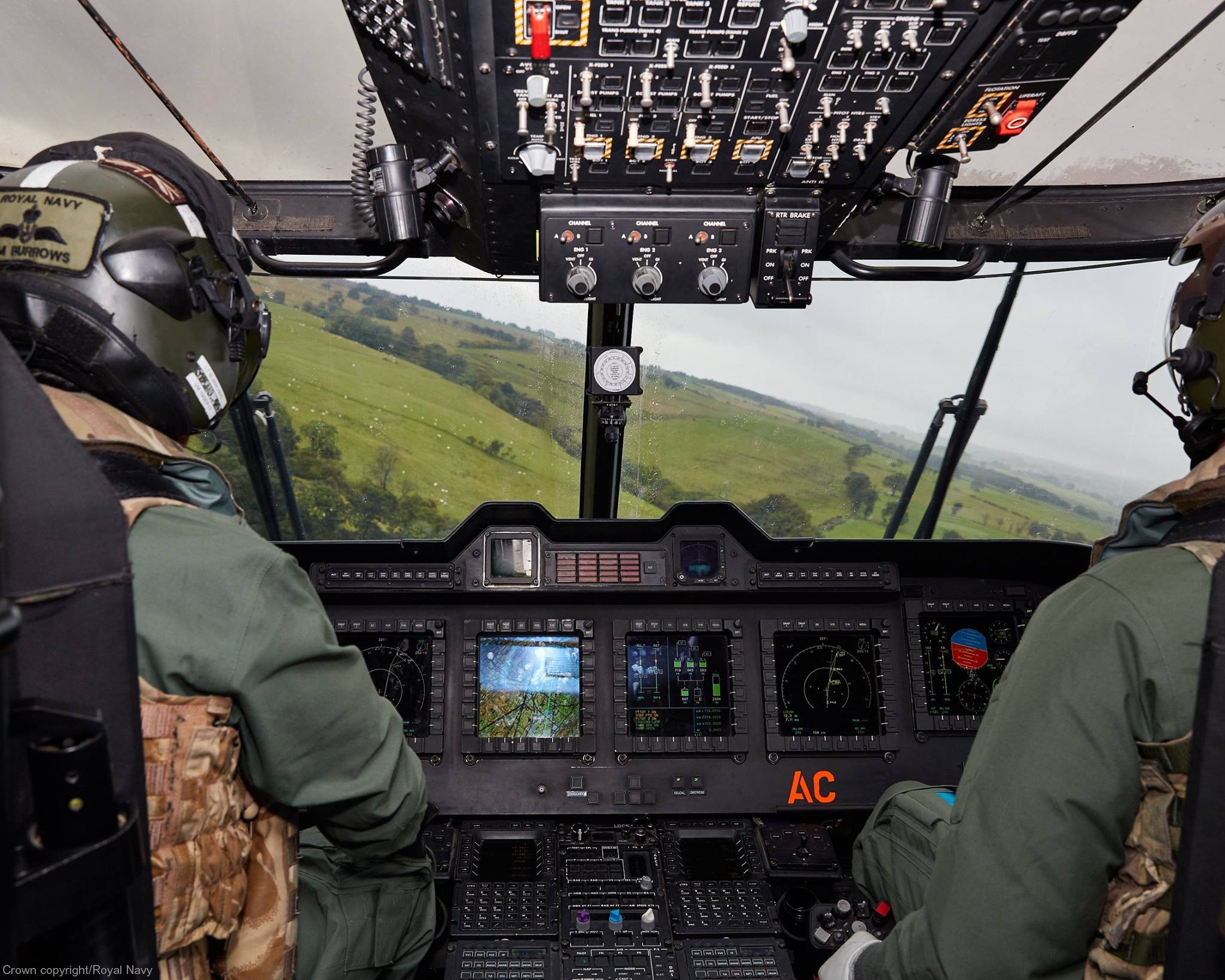 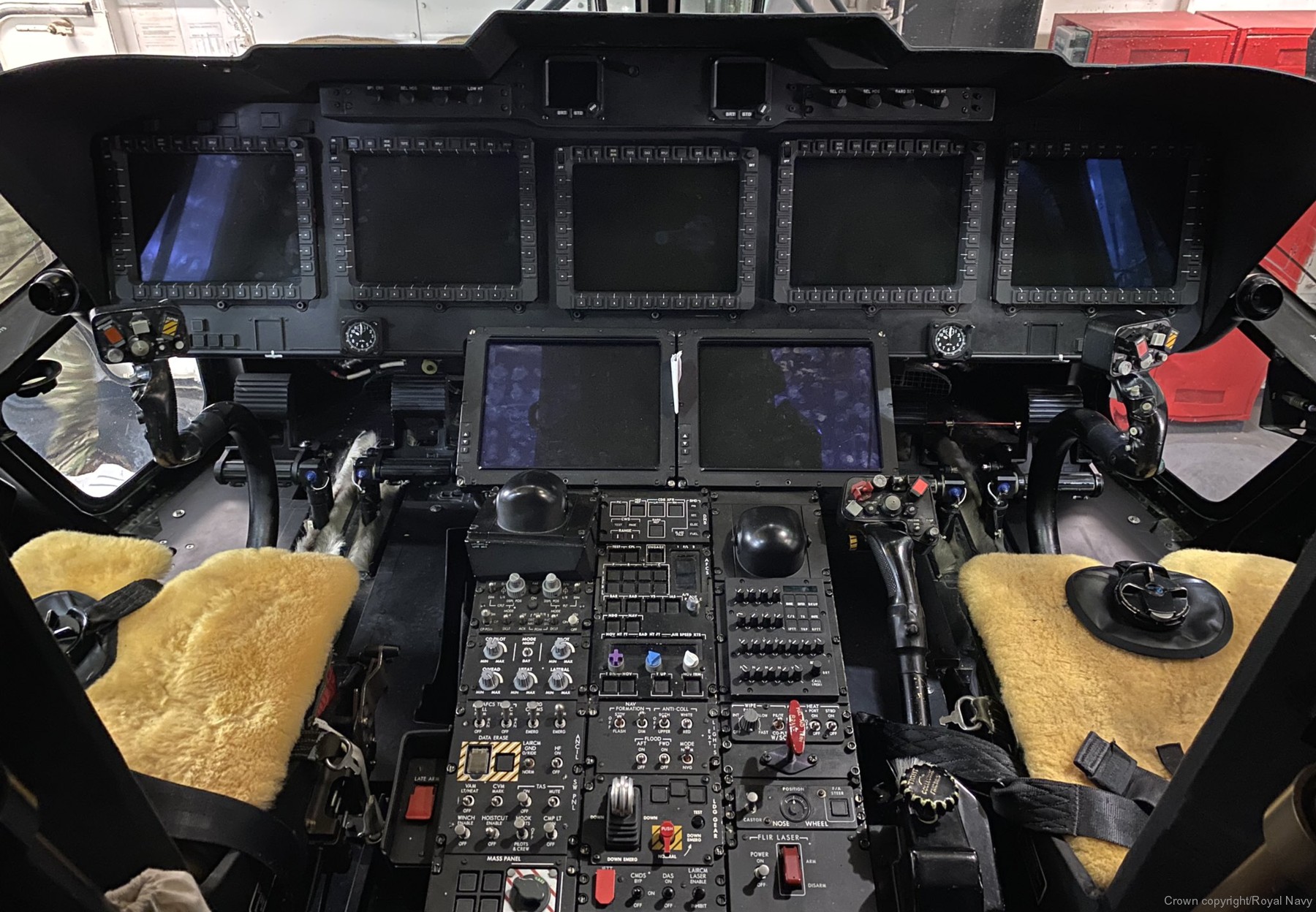 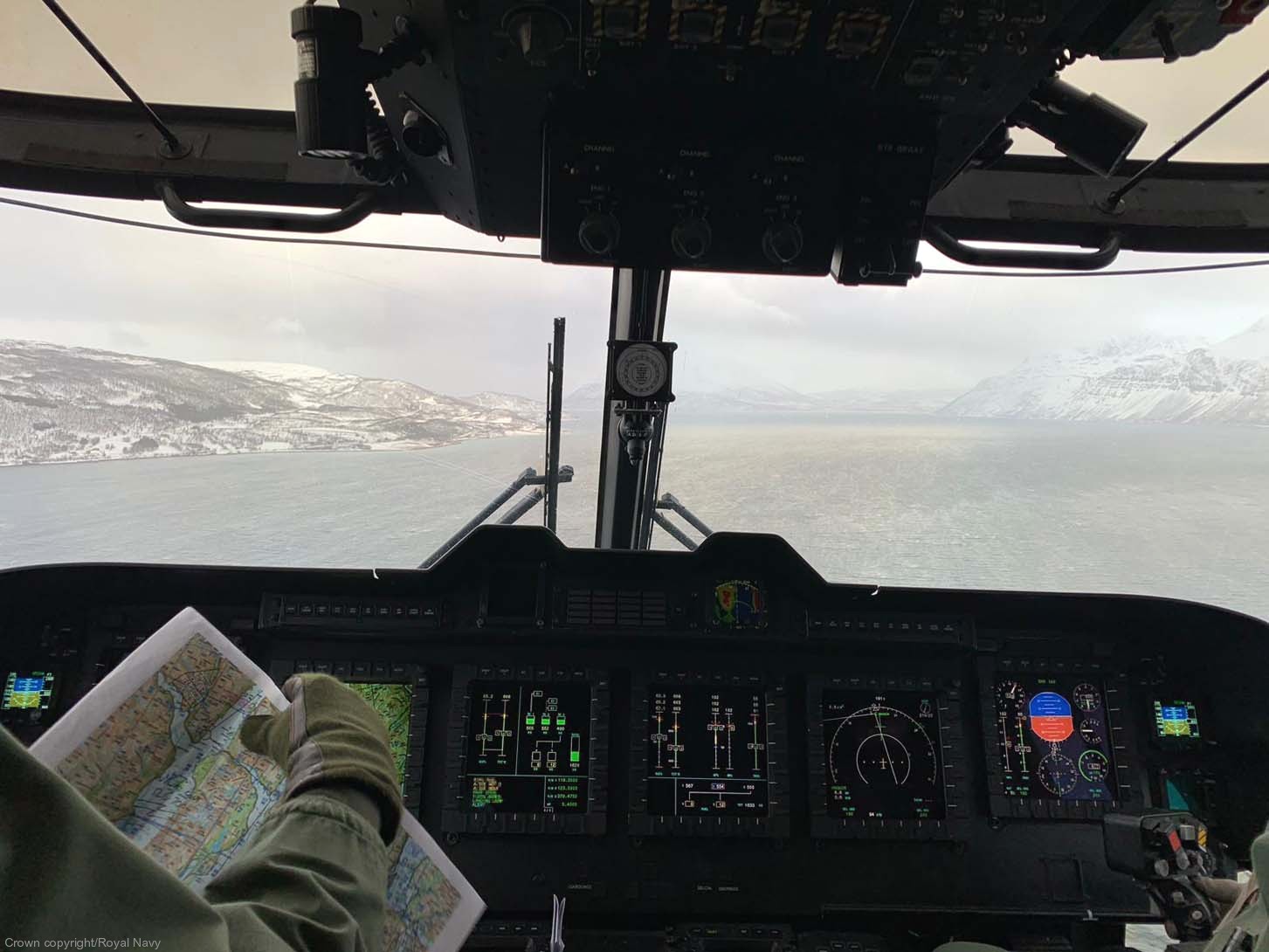 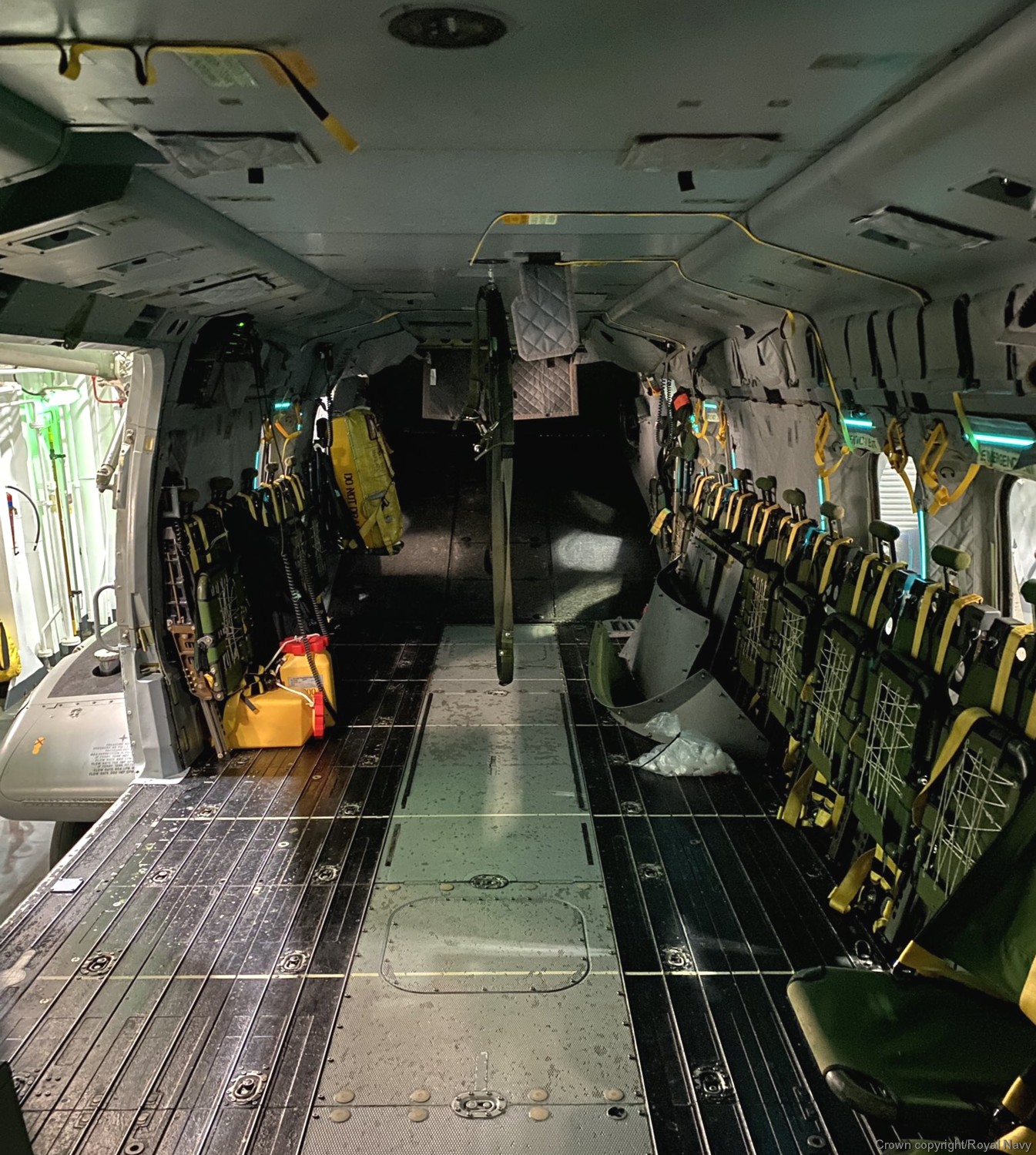 > LINK: former in-use variant Merlin HC3 / HC3A / HC3i |
||
|
|
||
|
|
seaforces.org
|
Royal
Navy start page
| |
